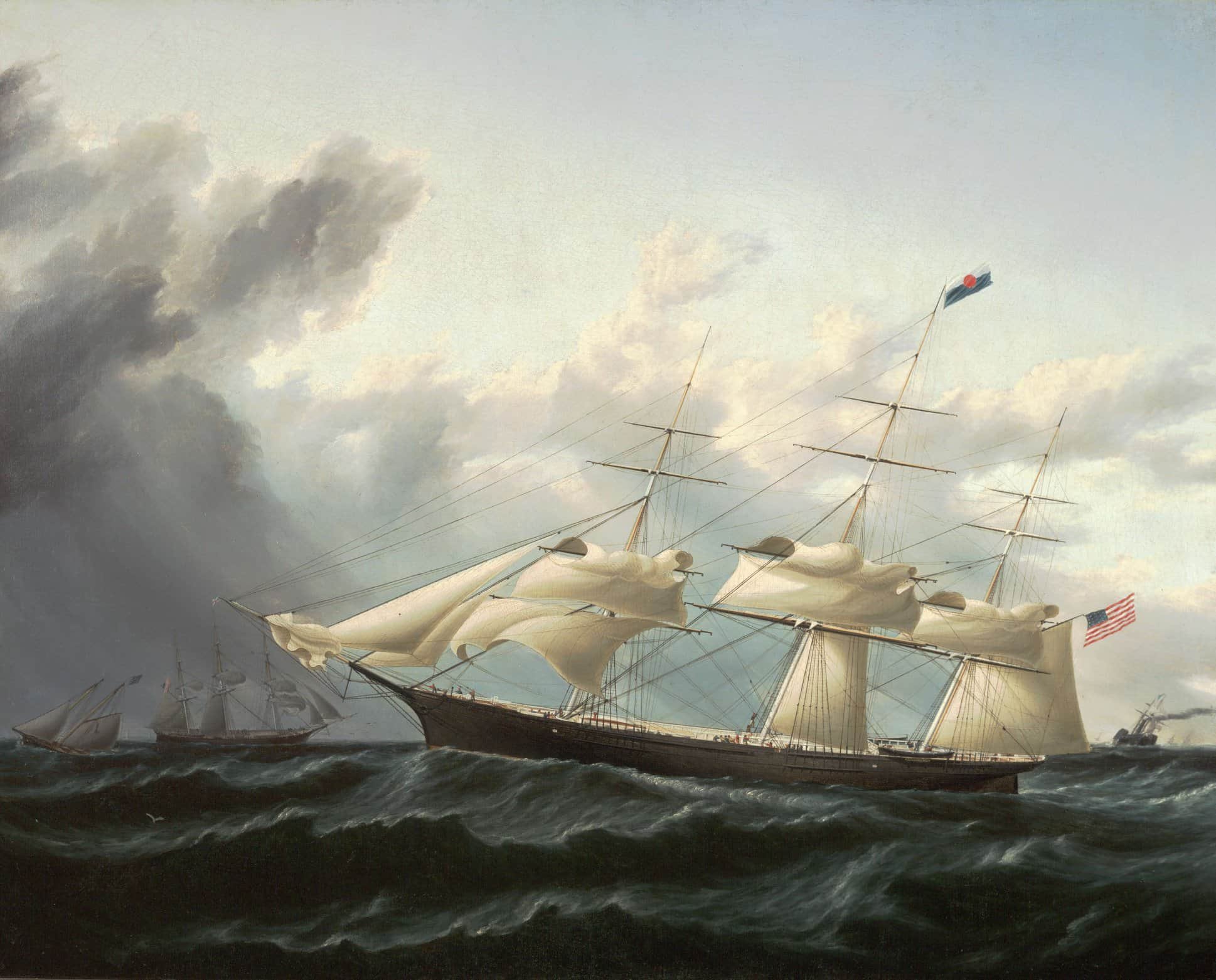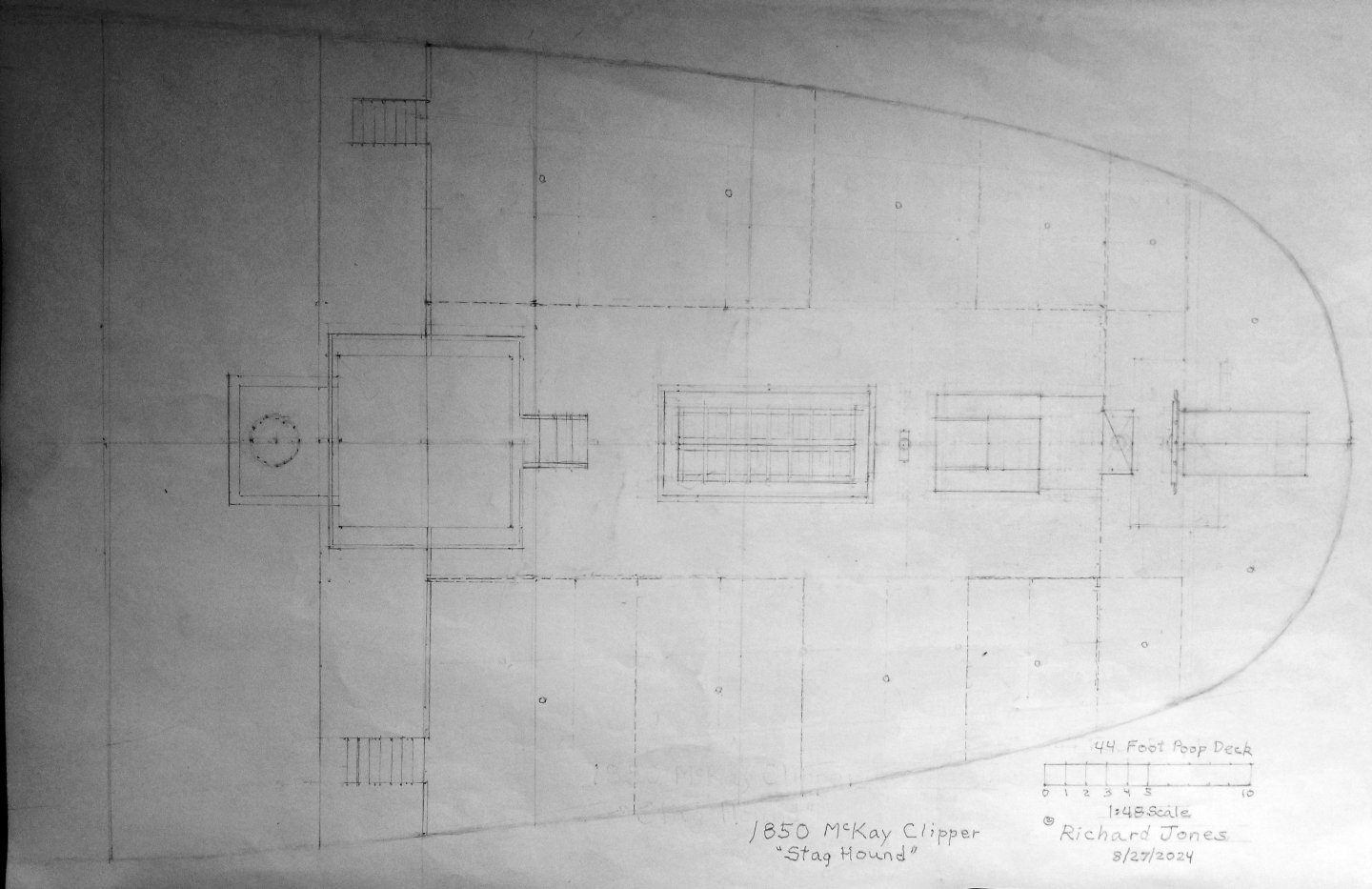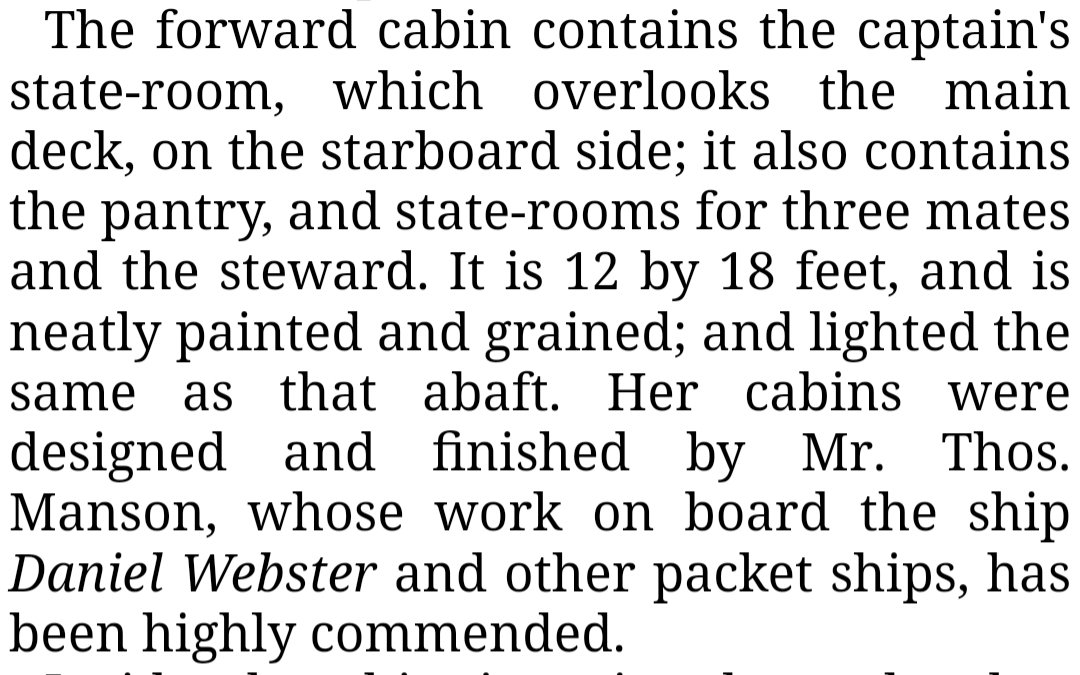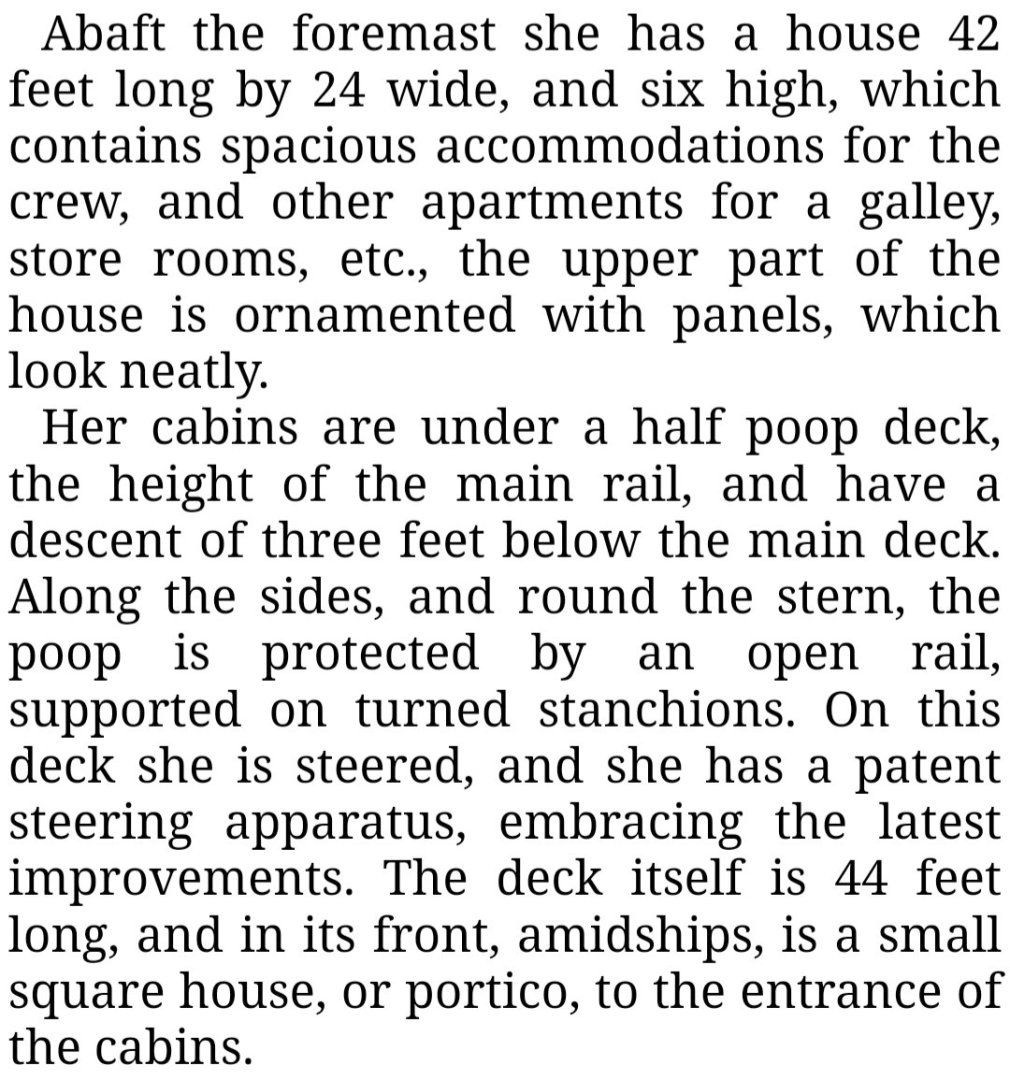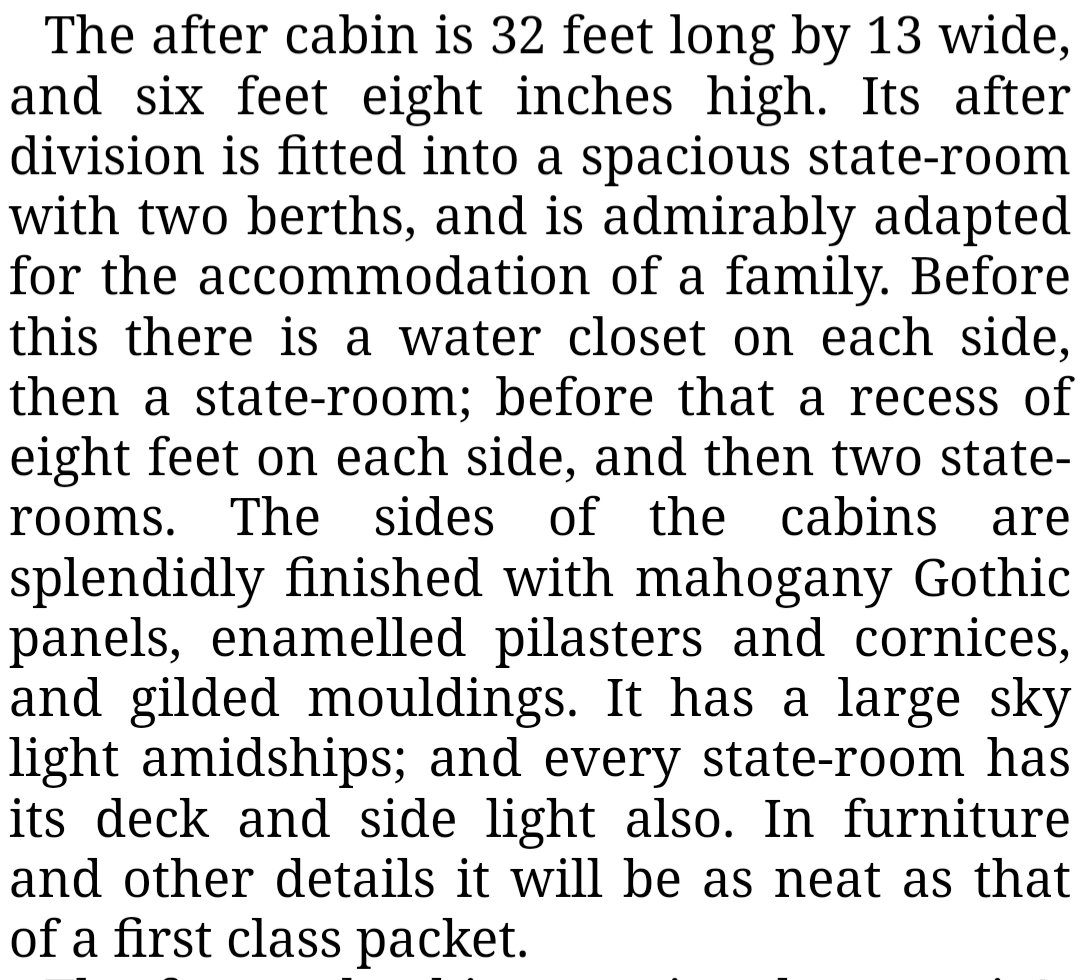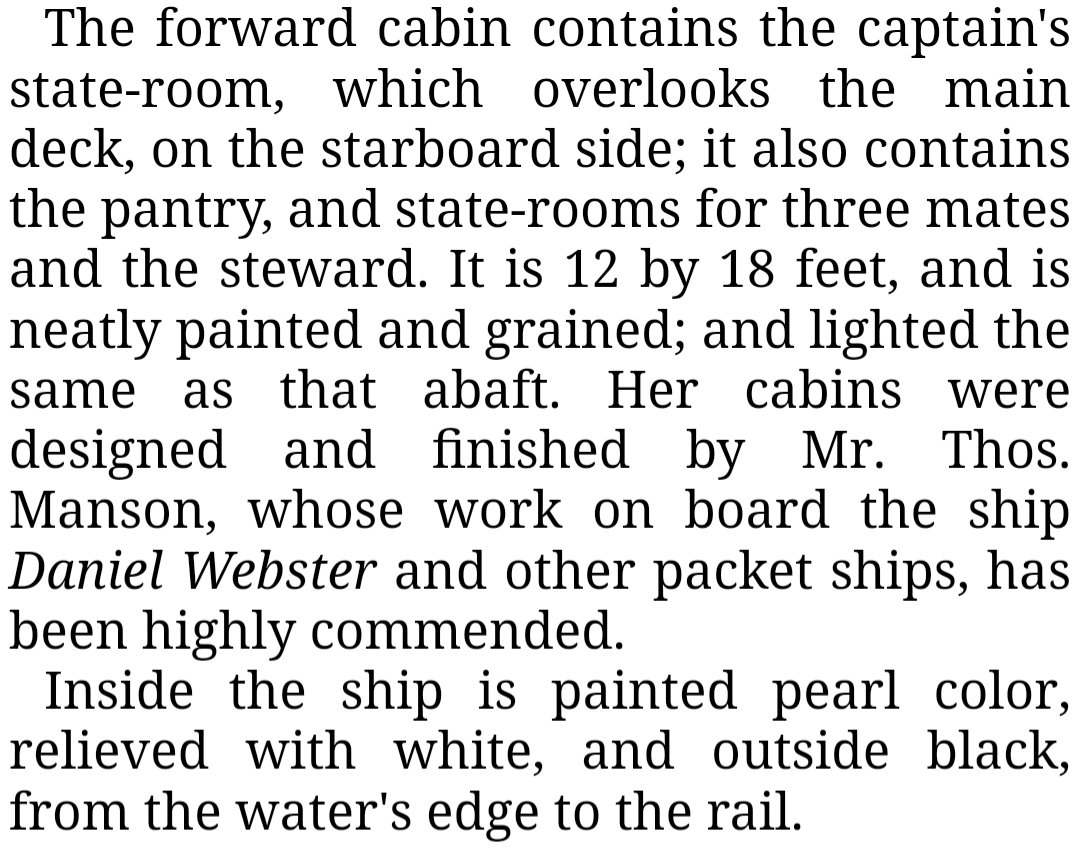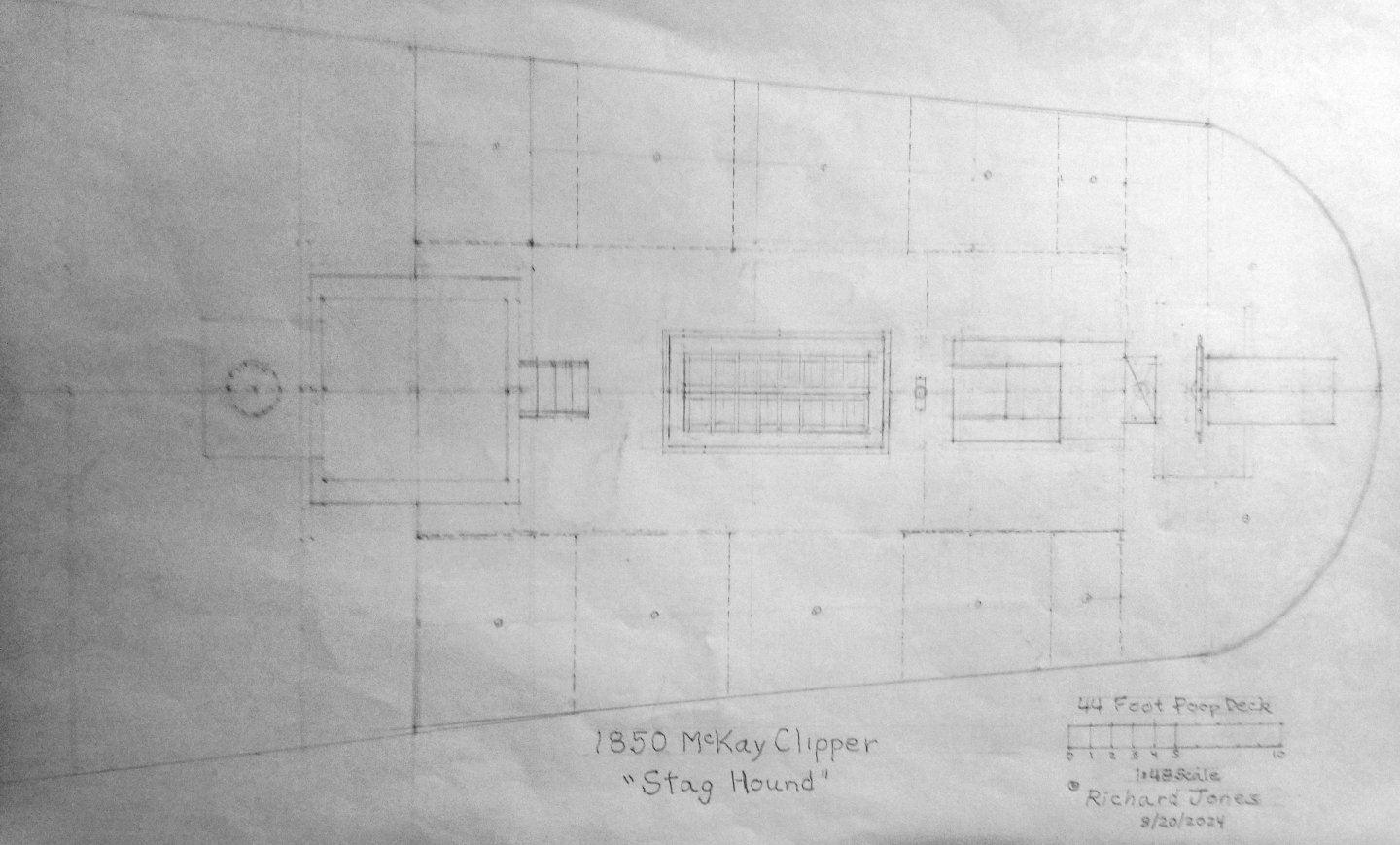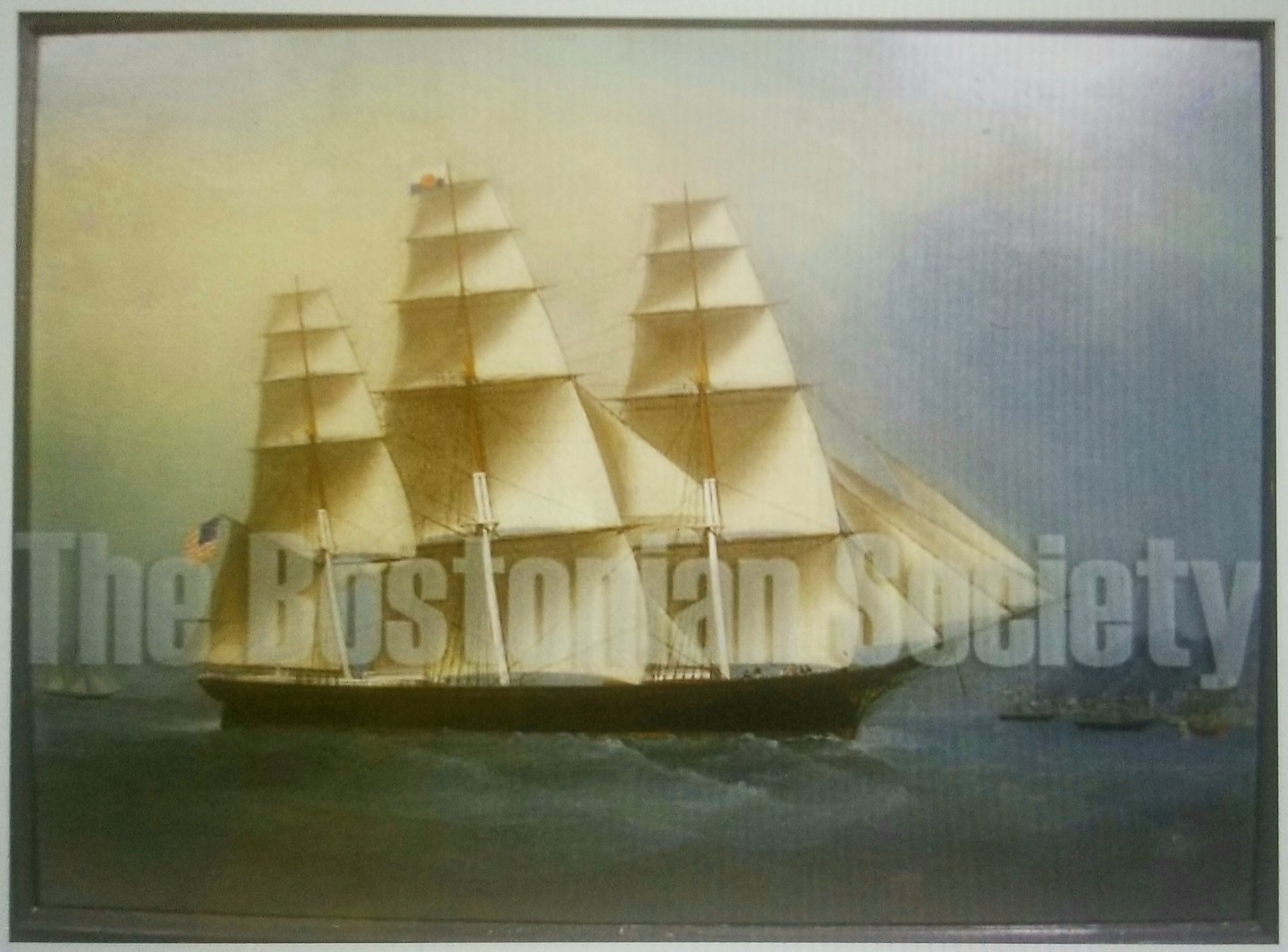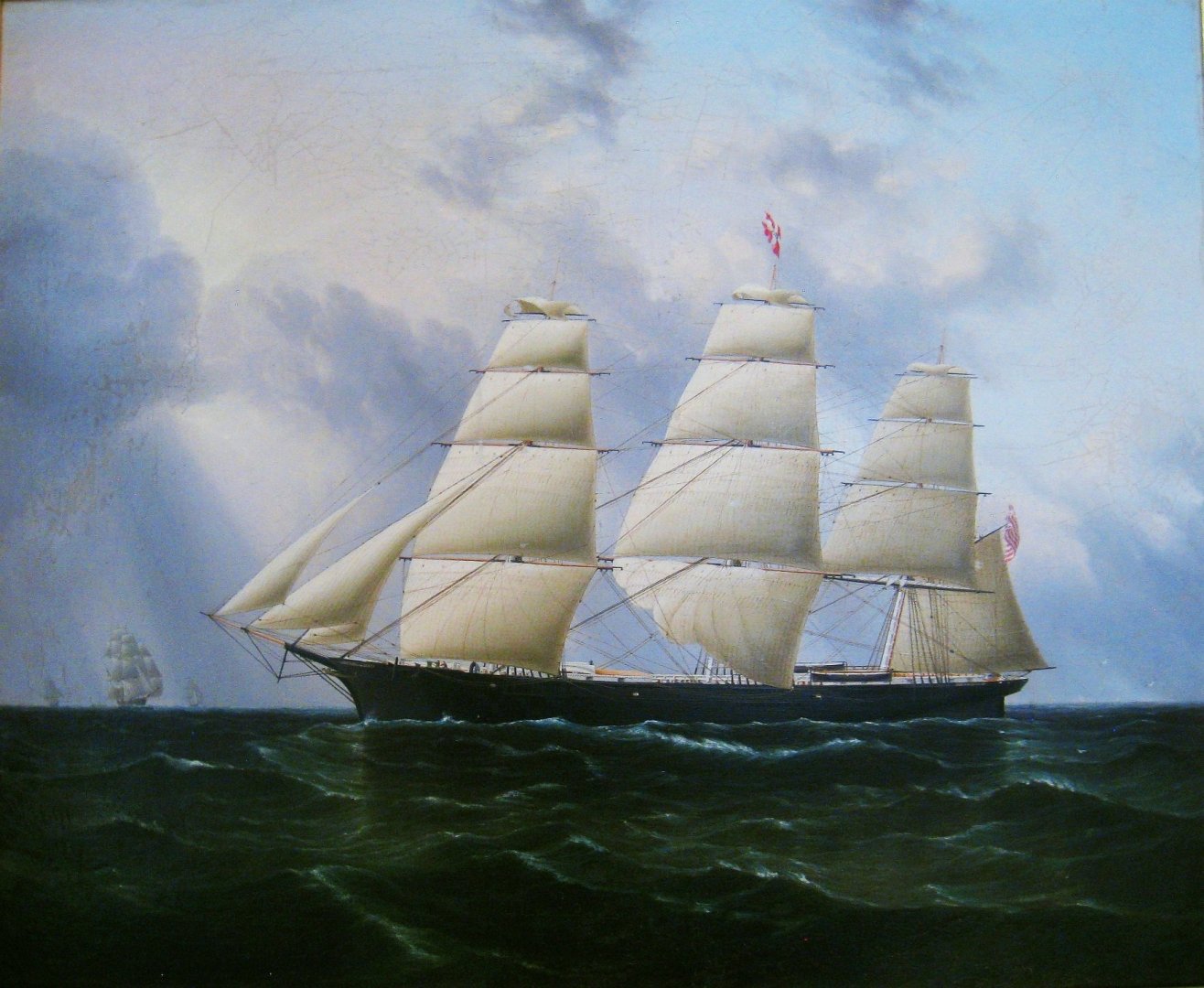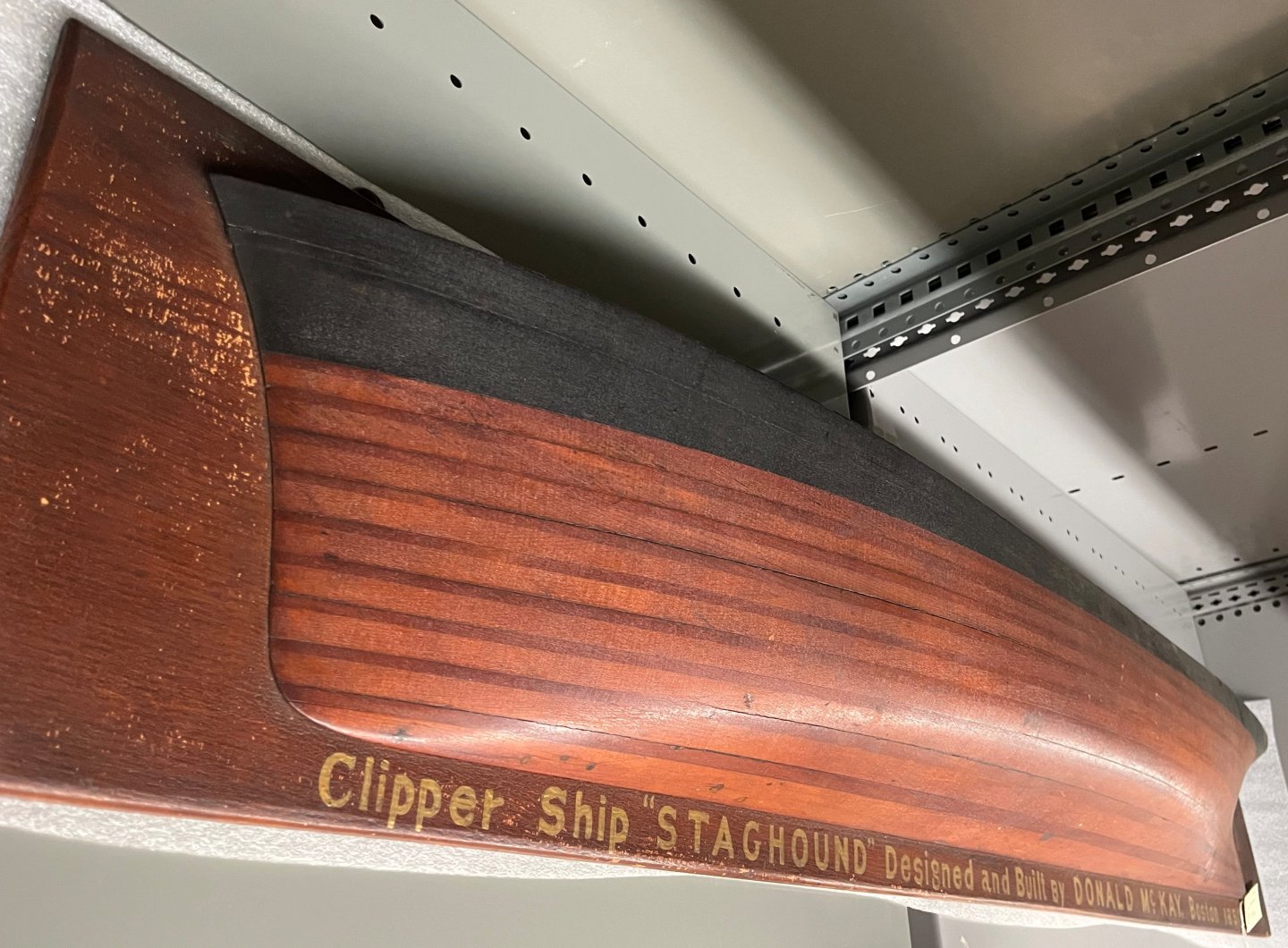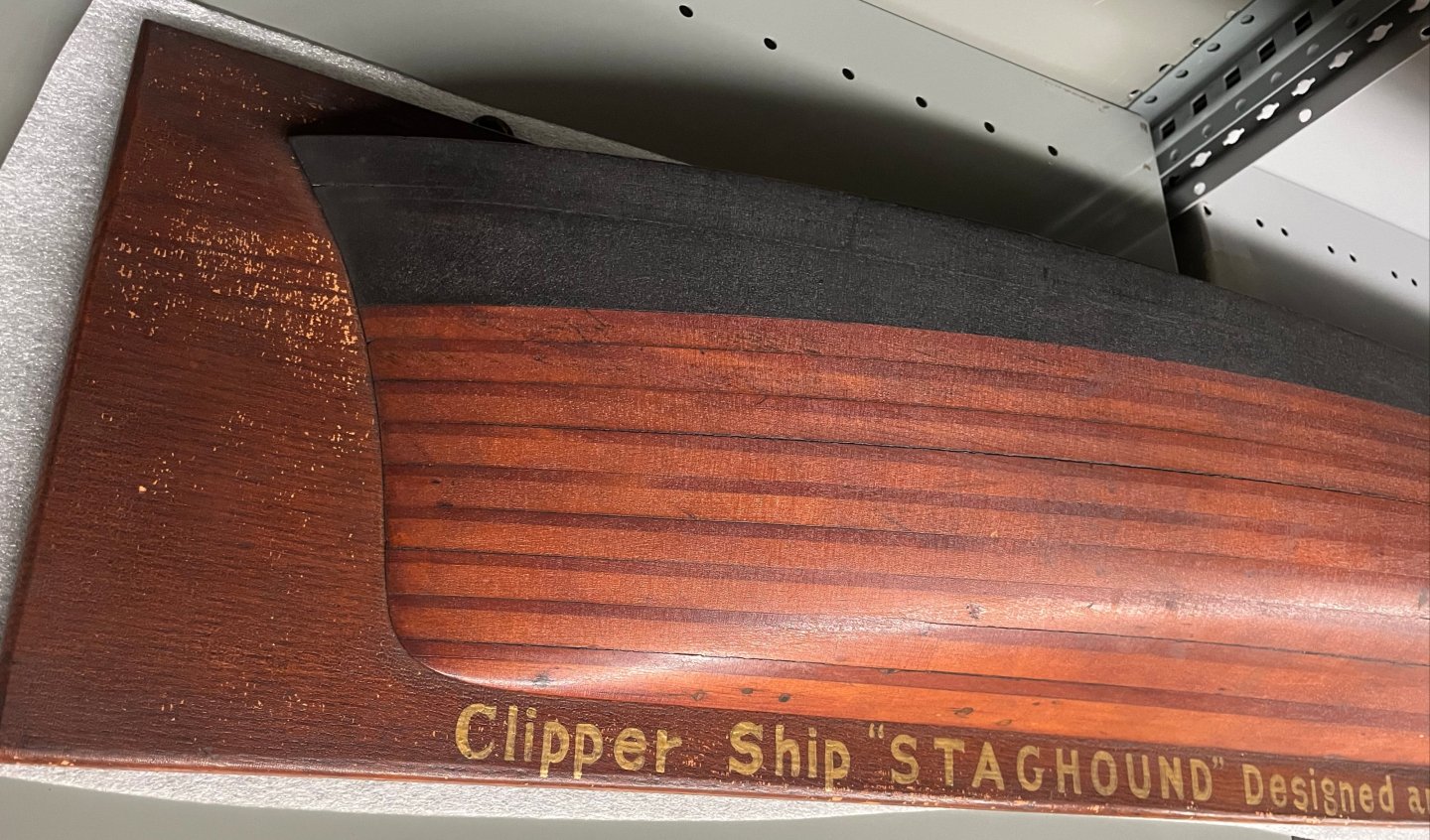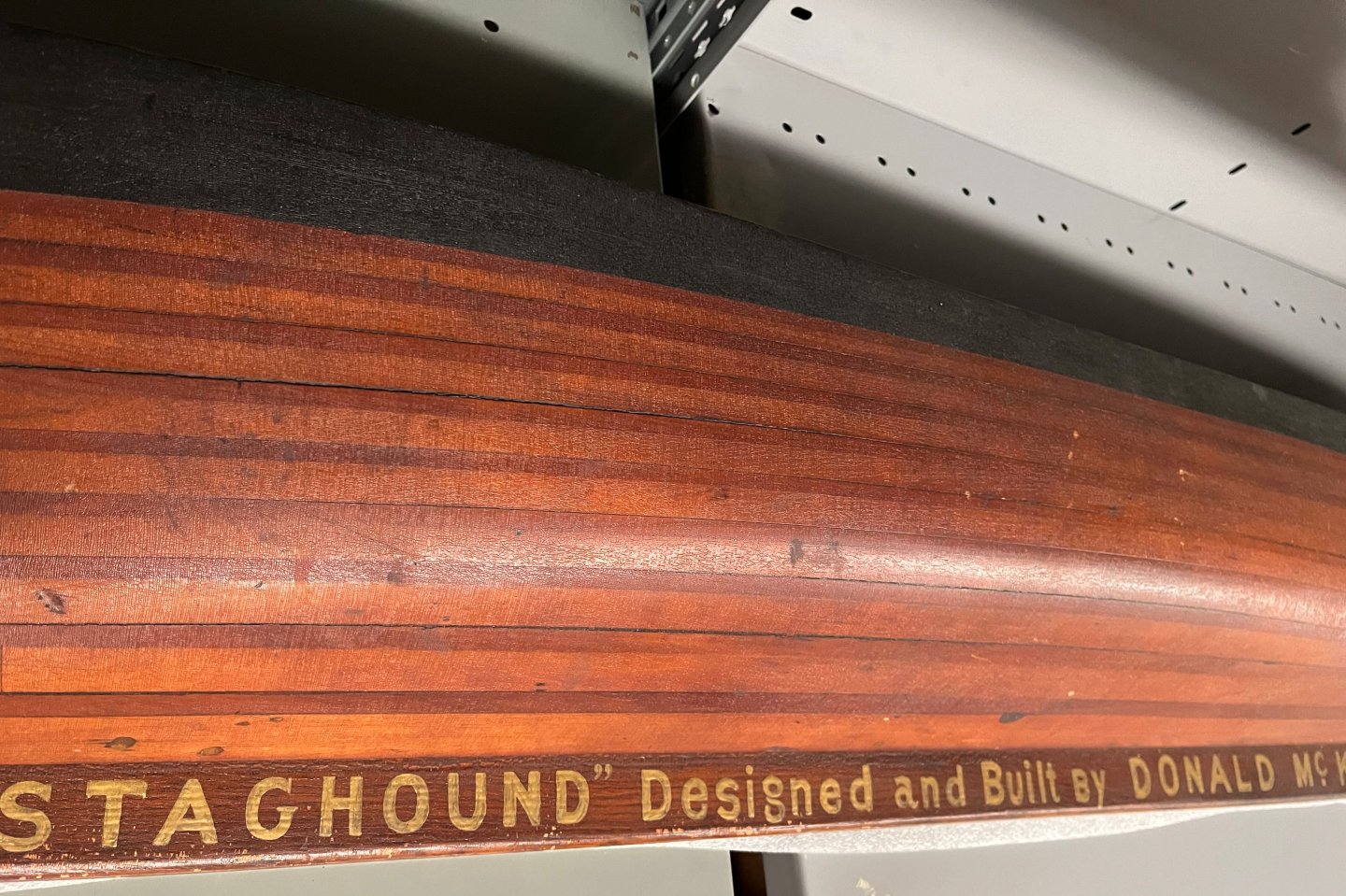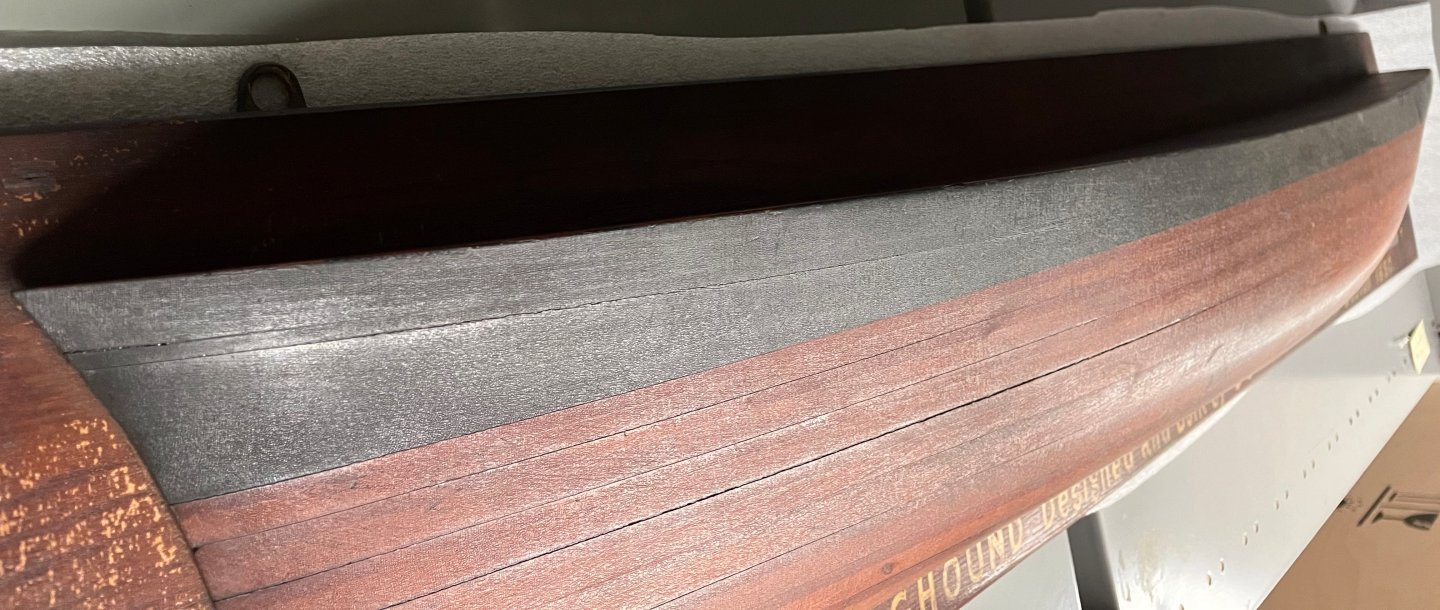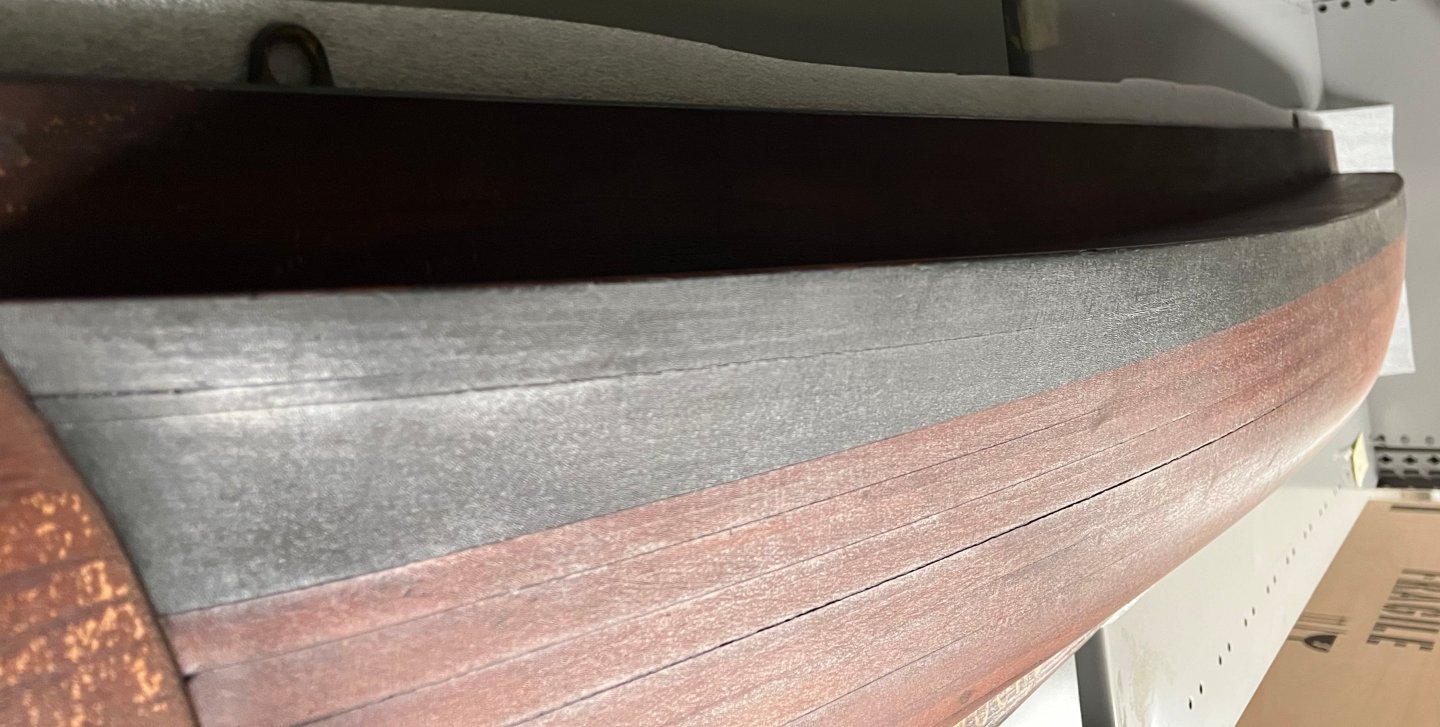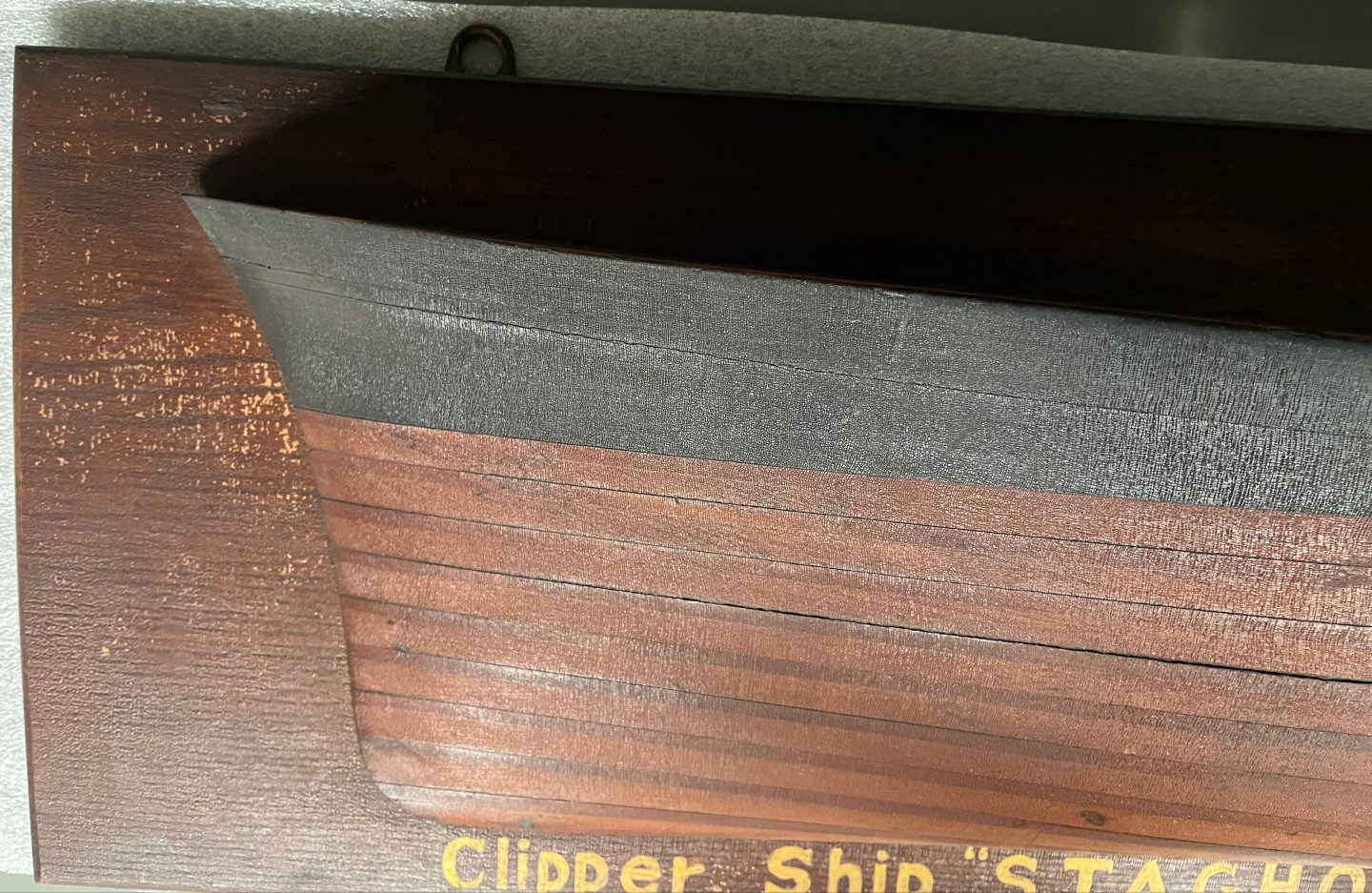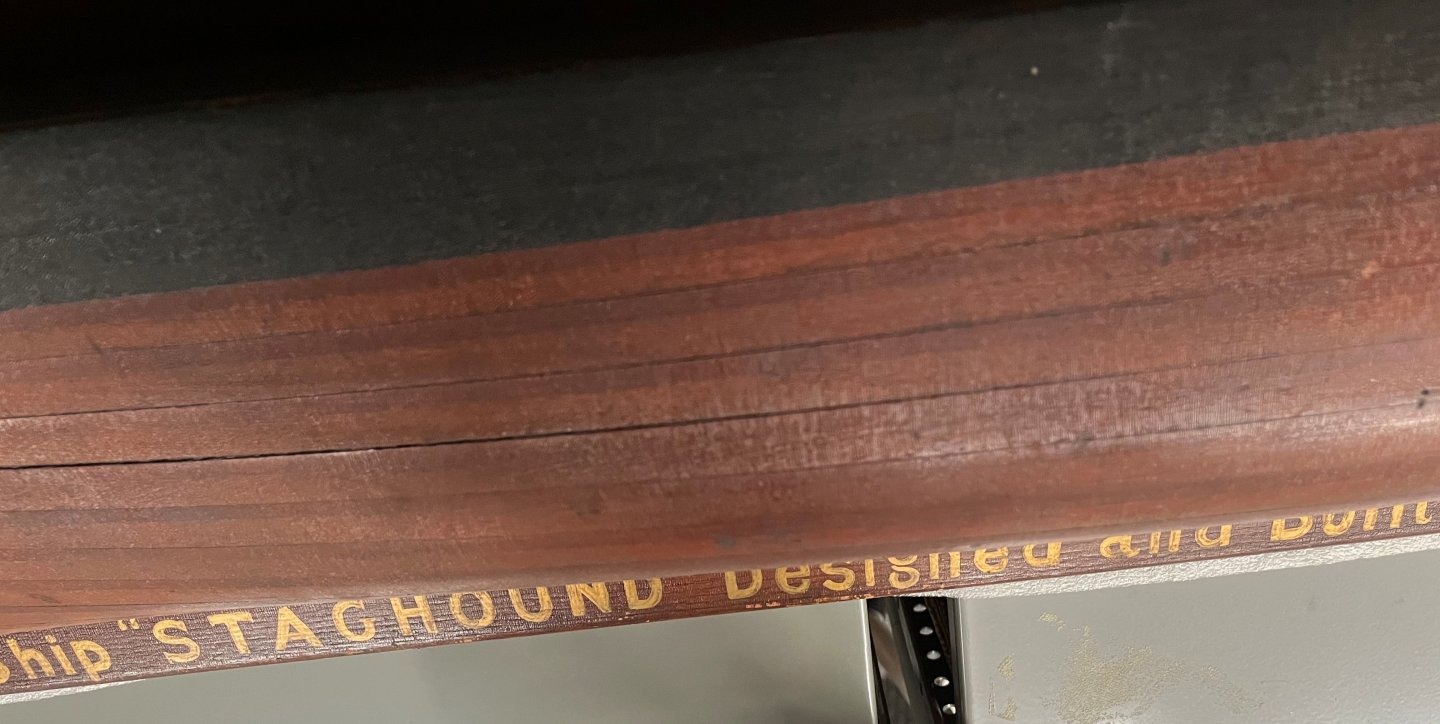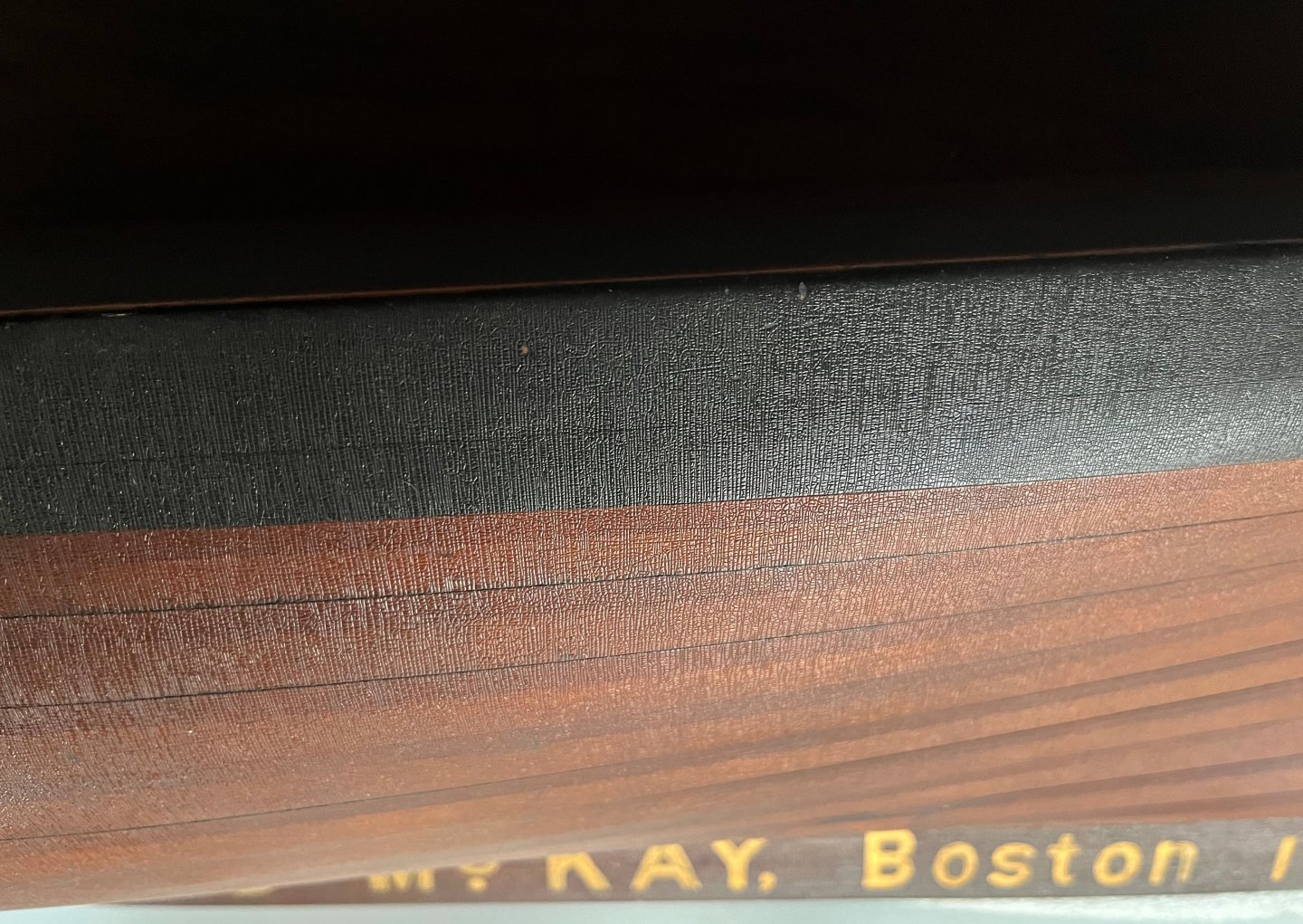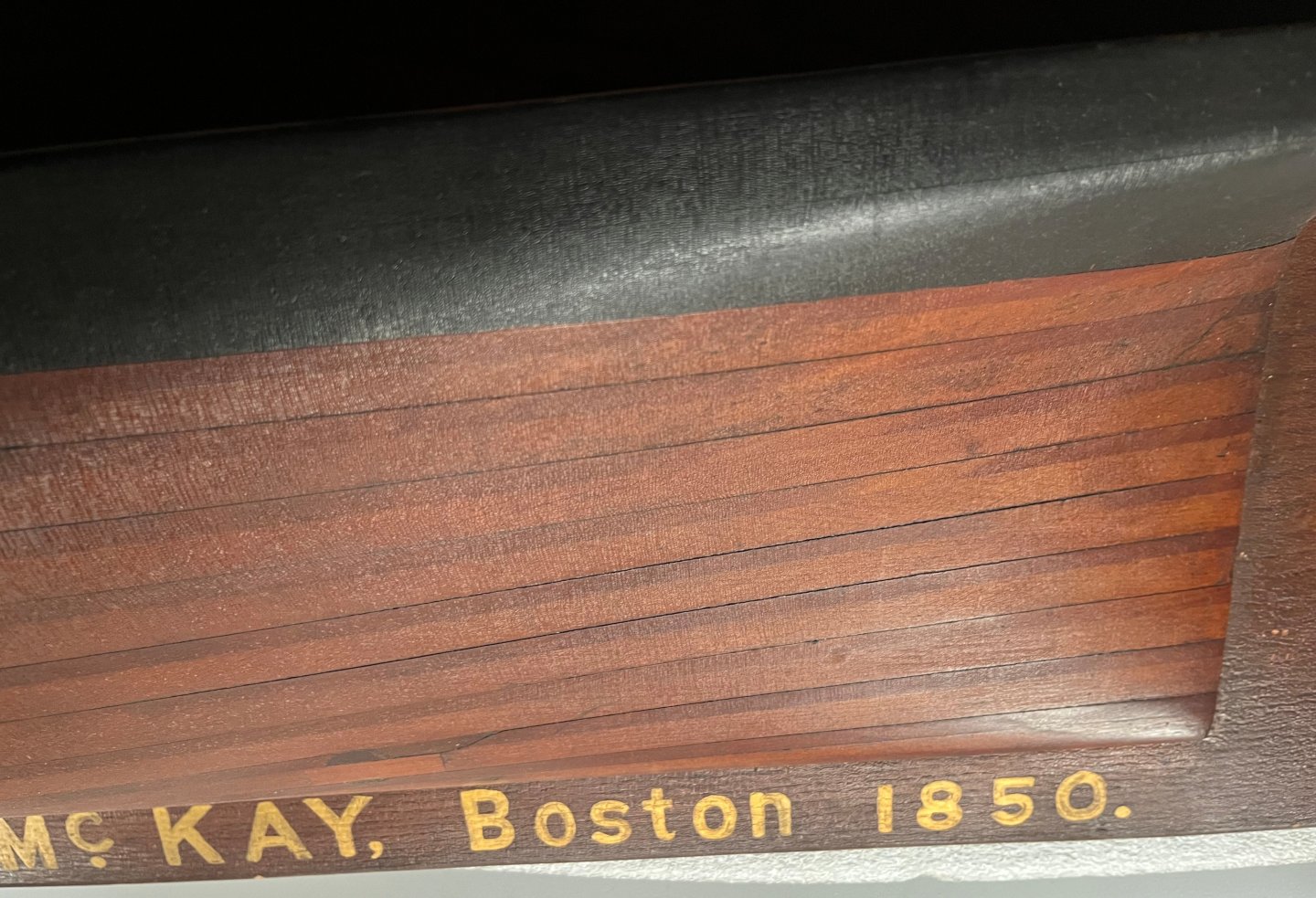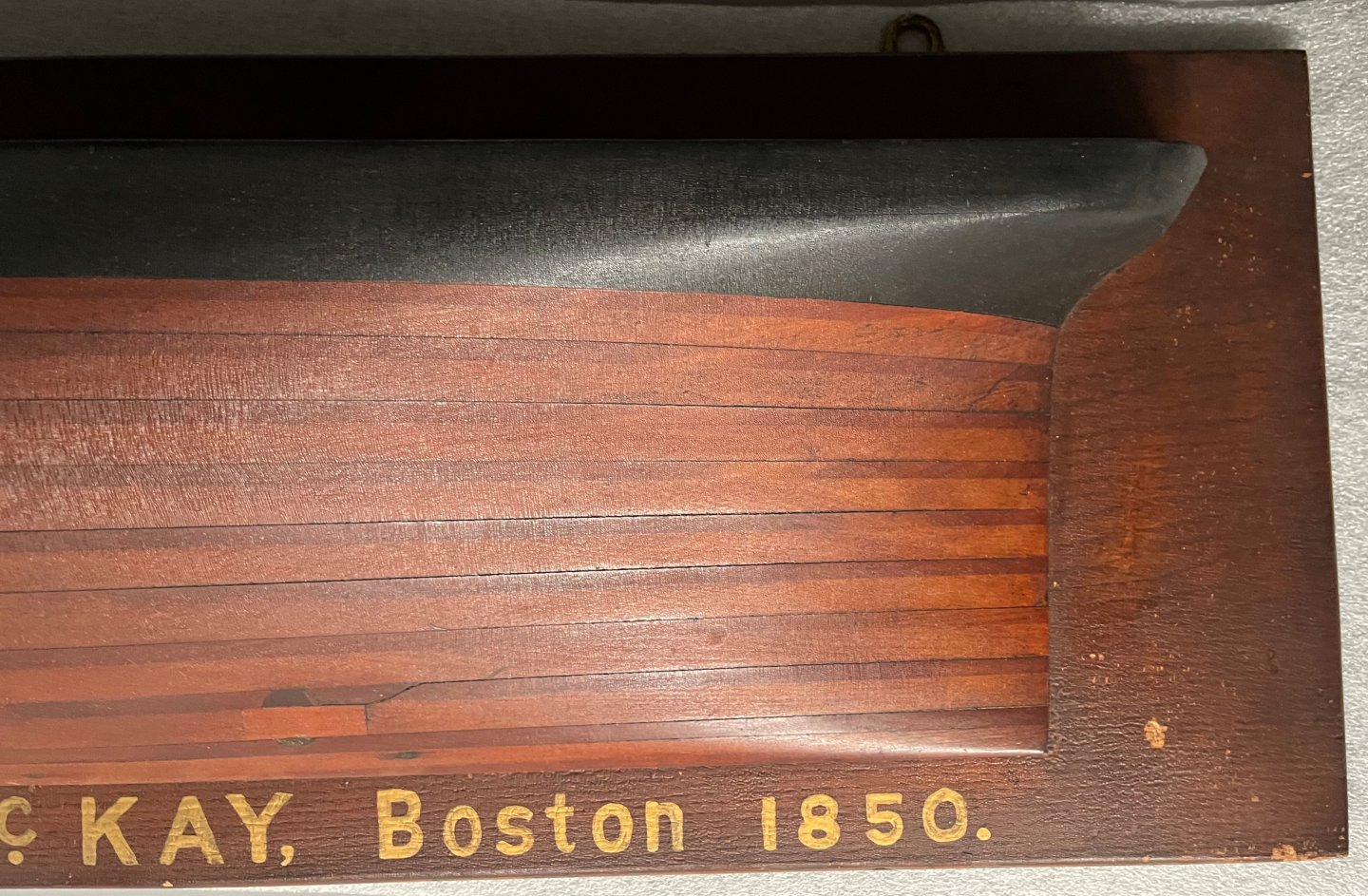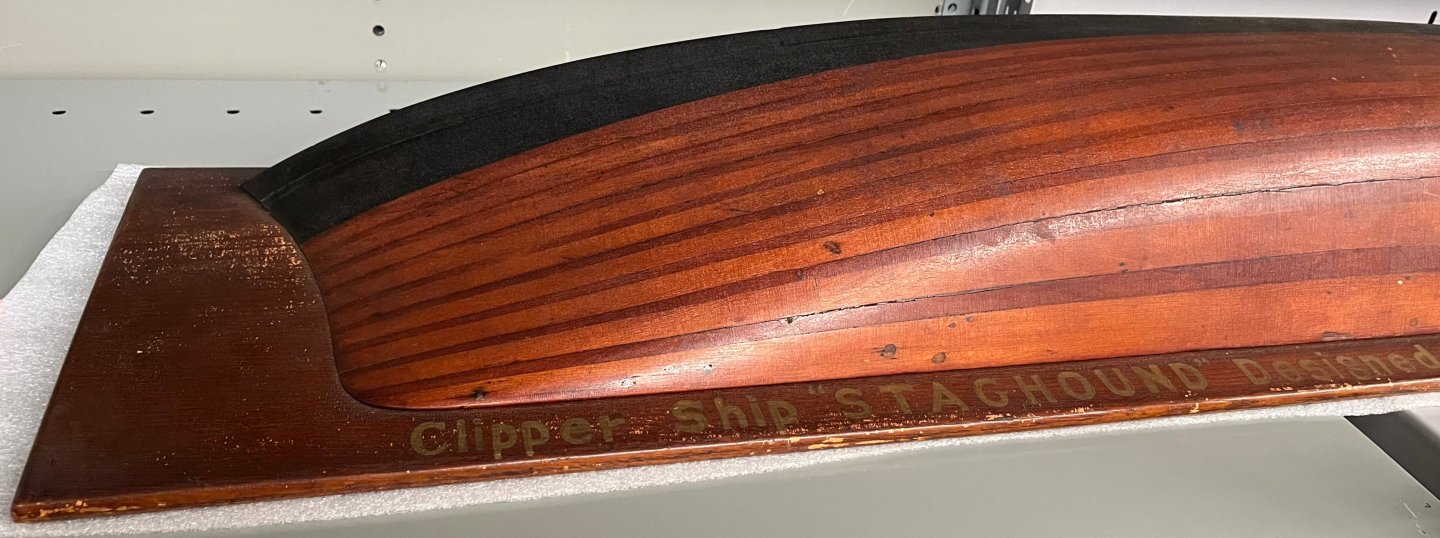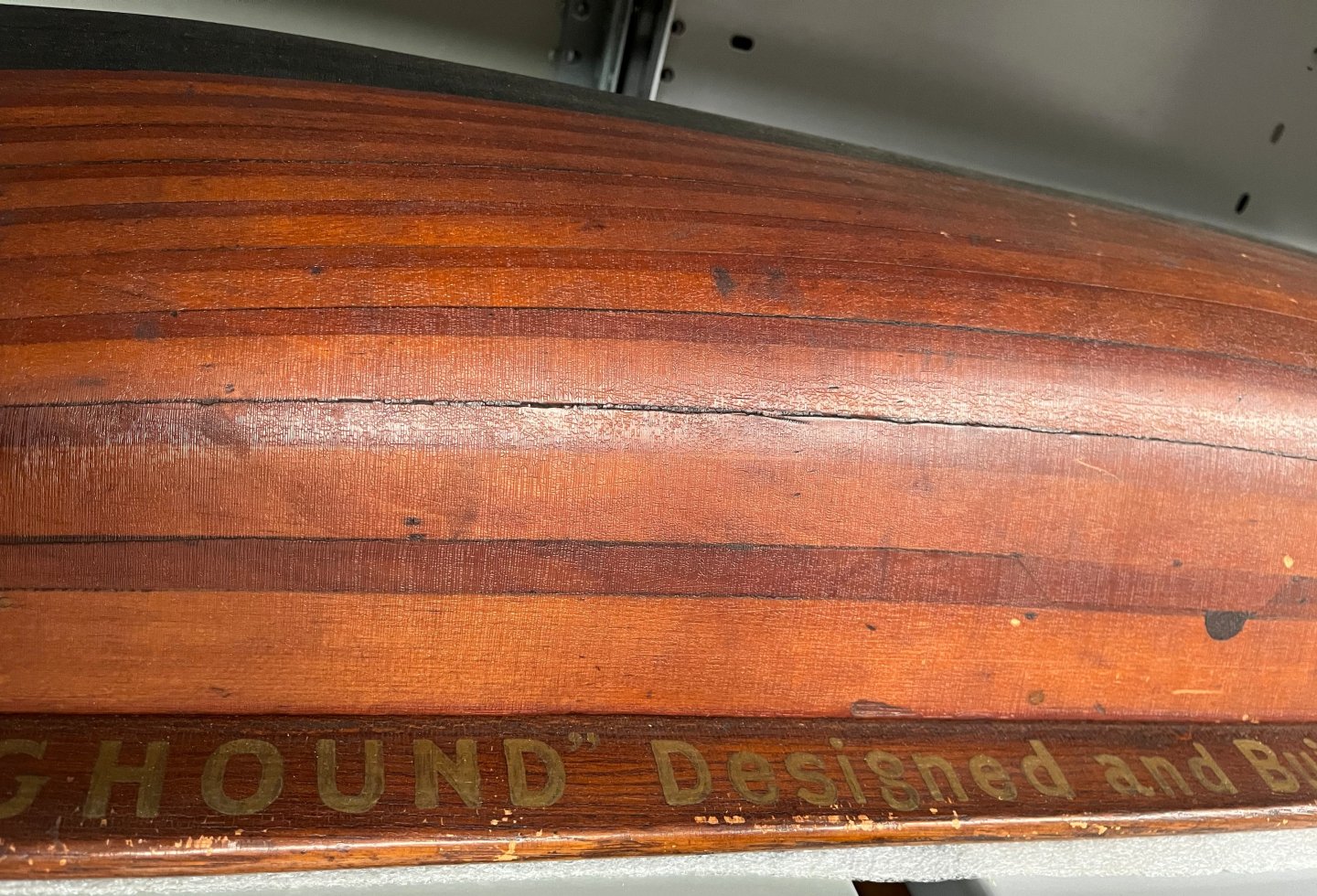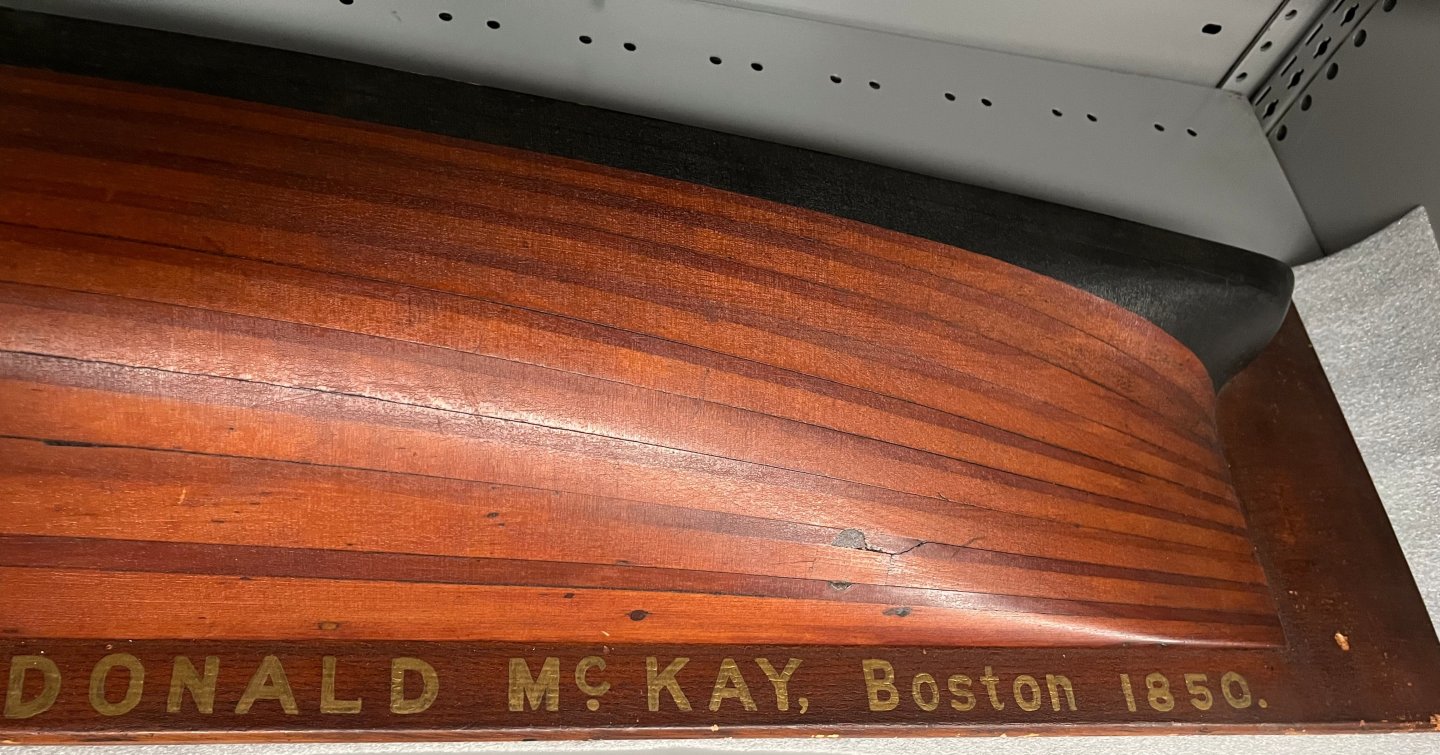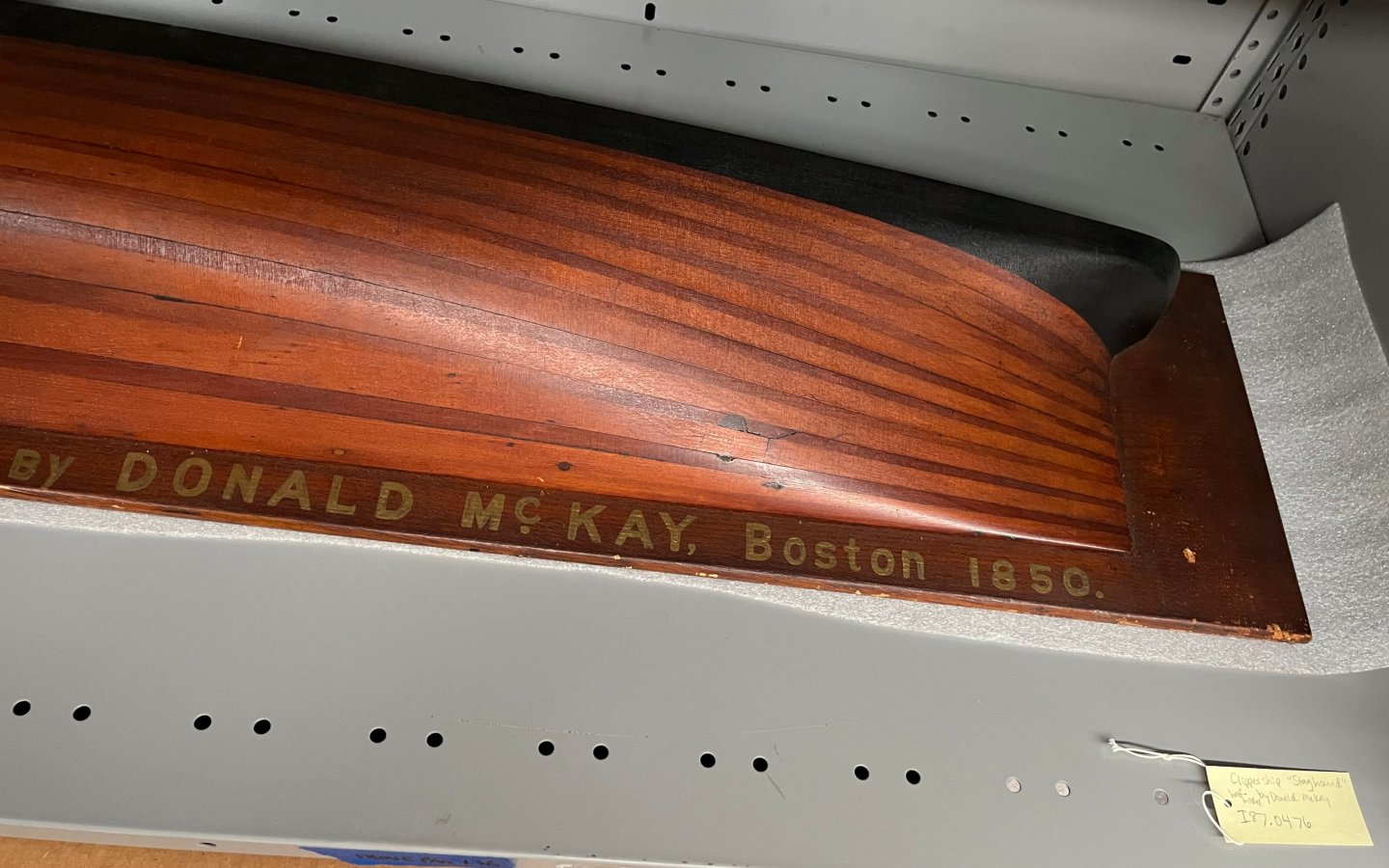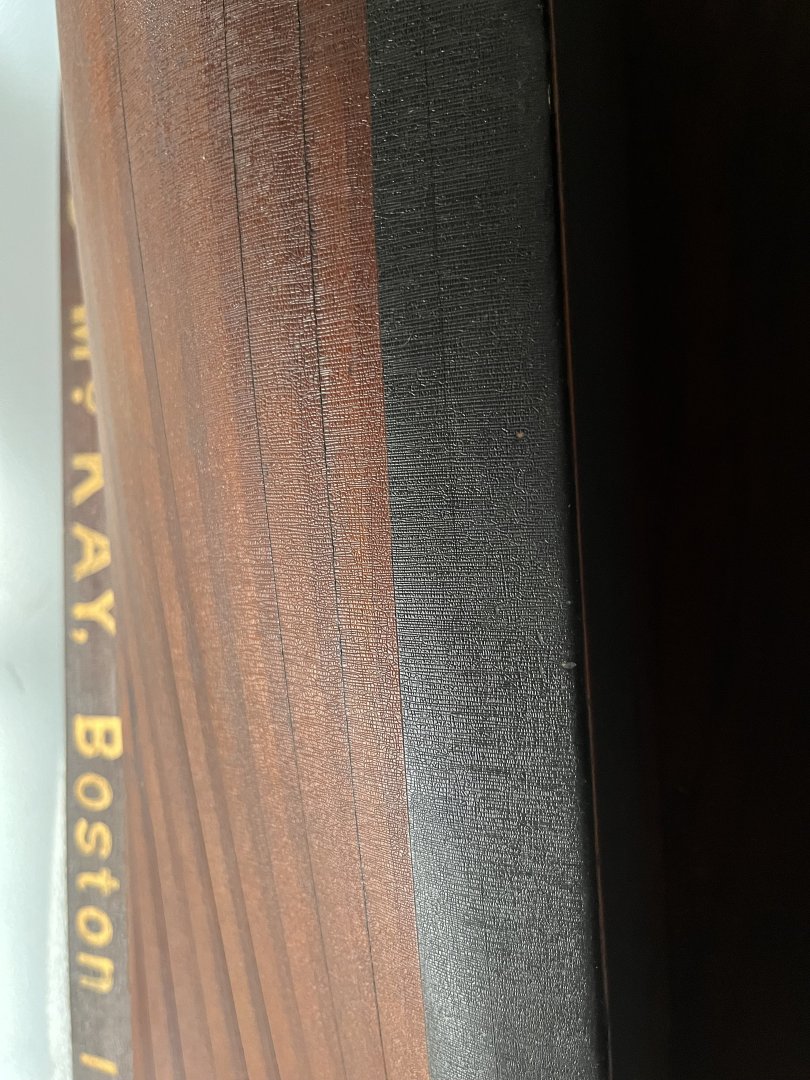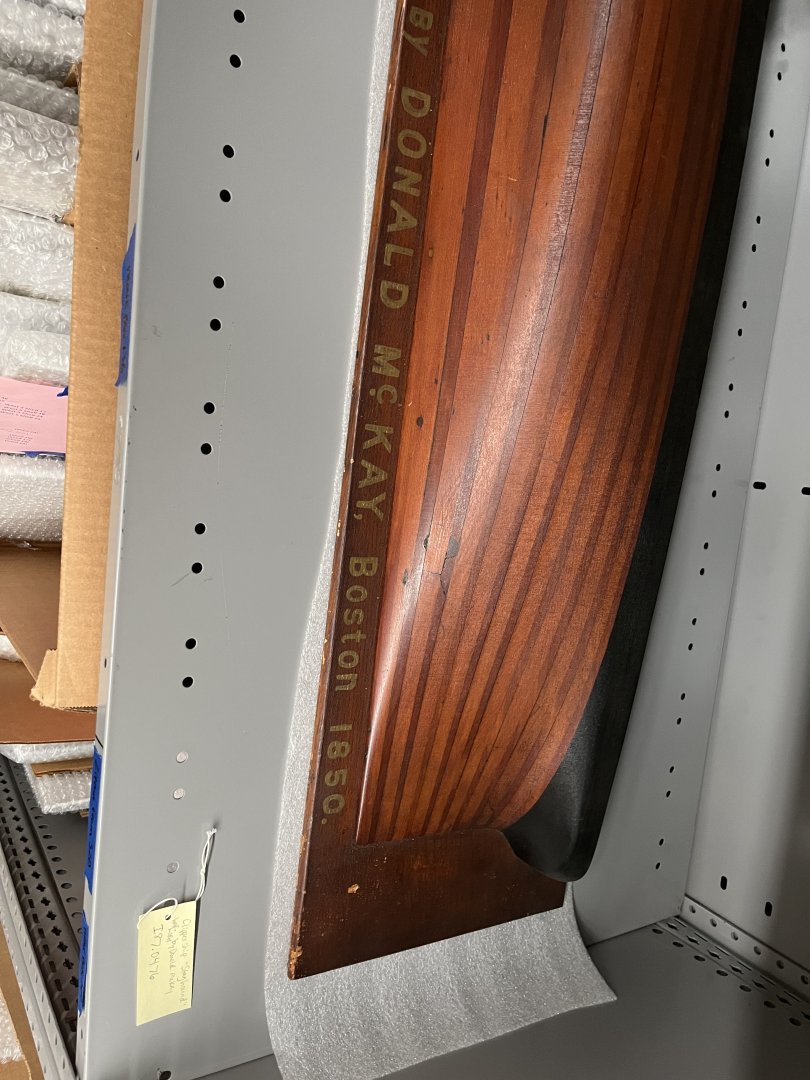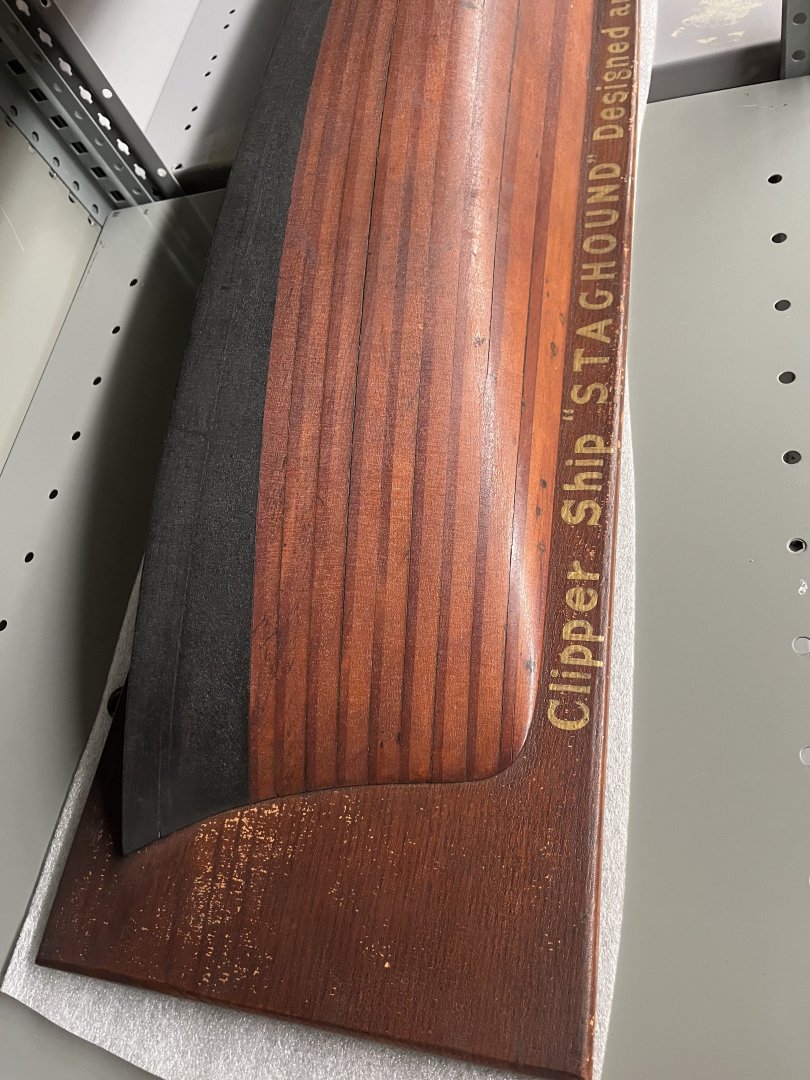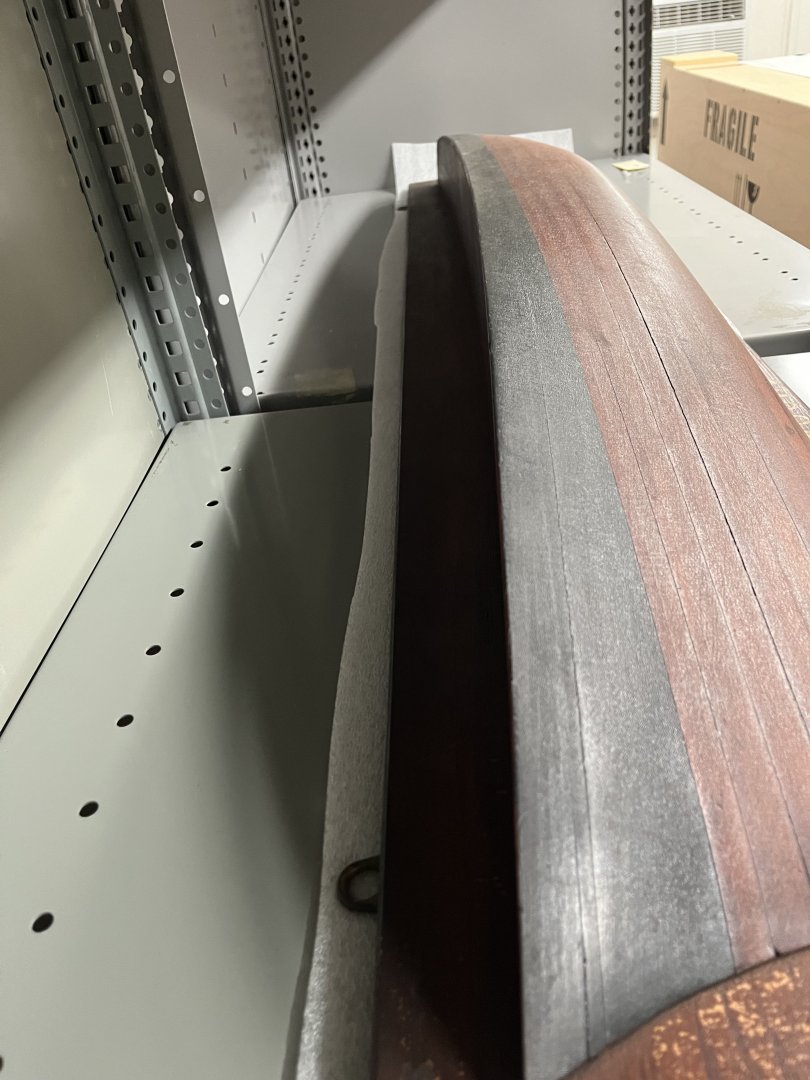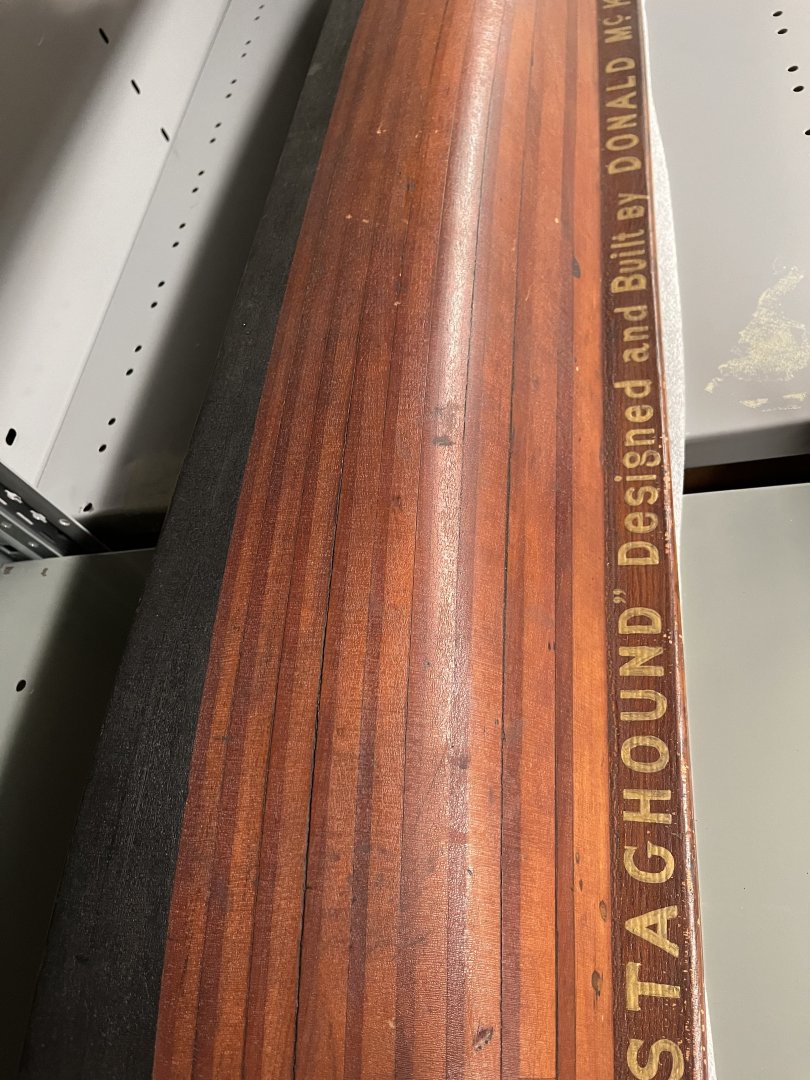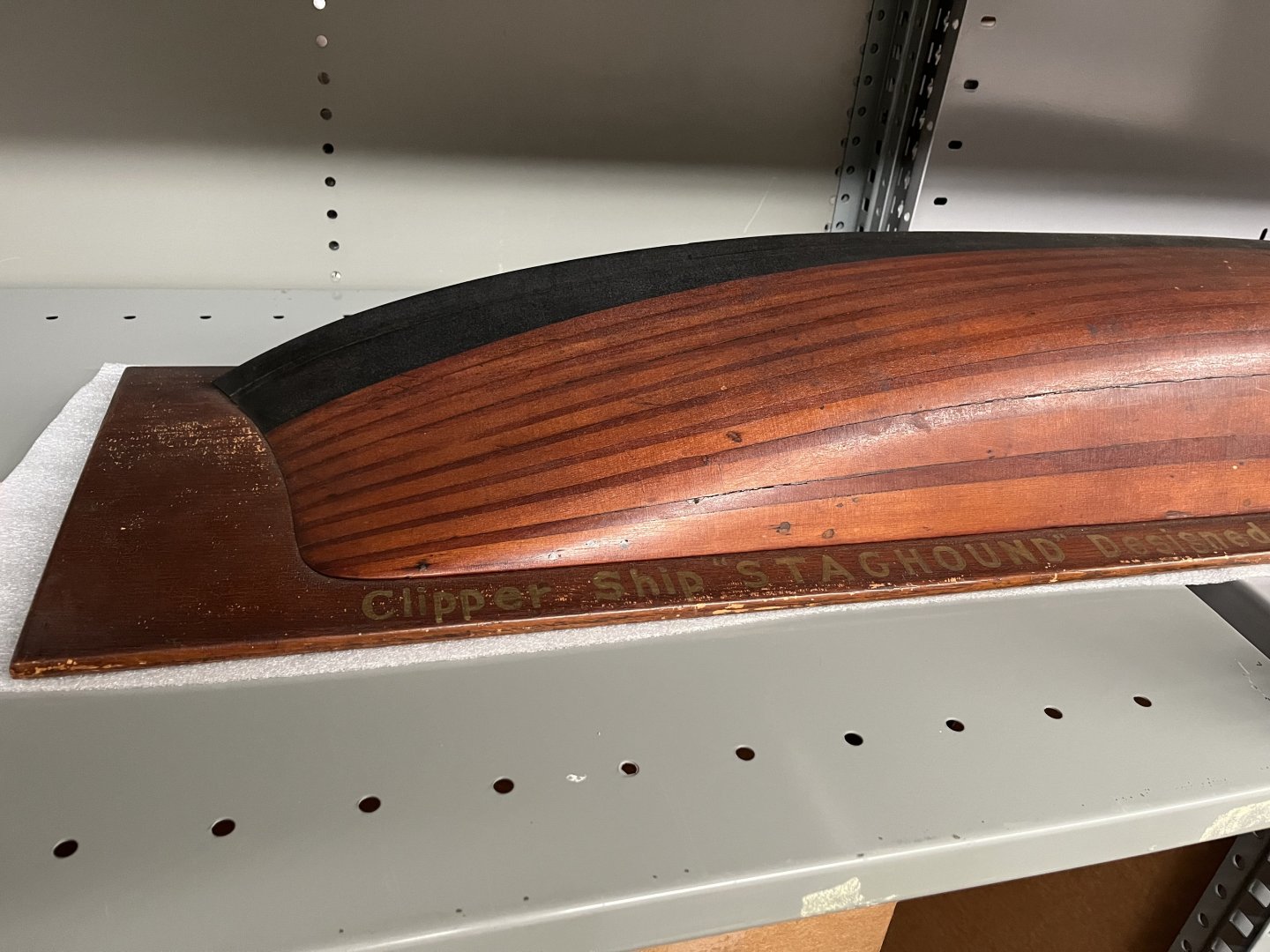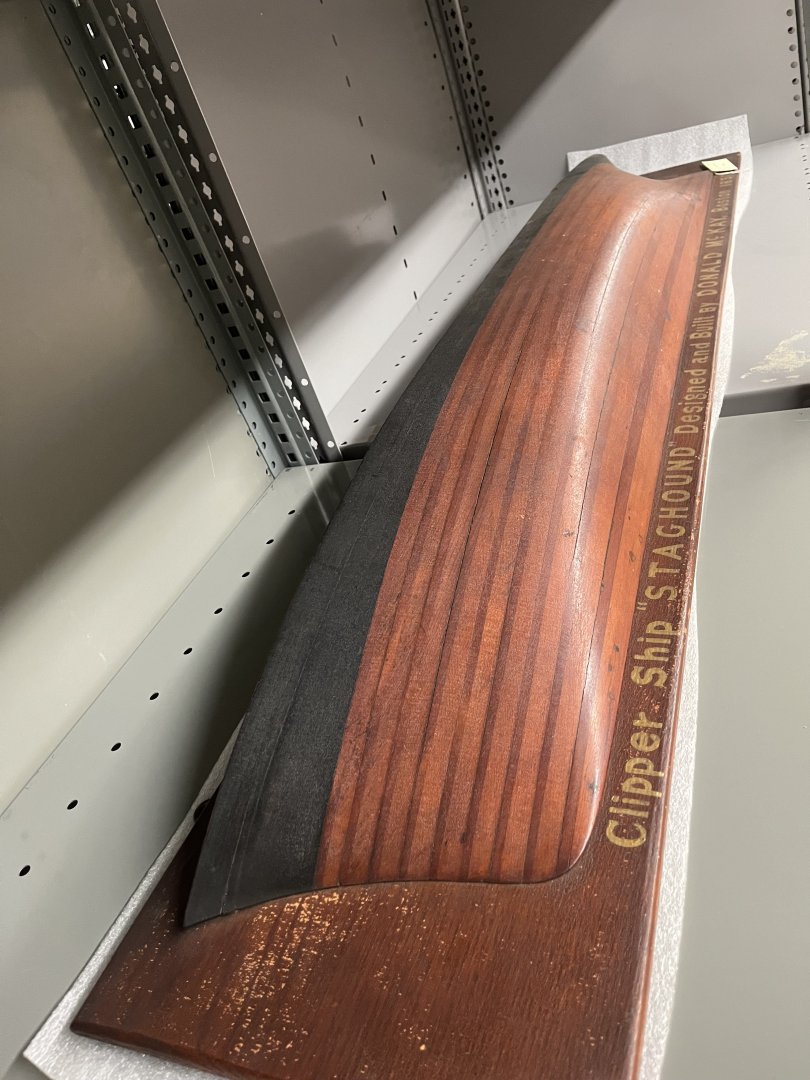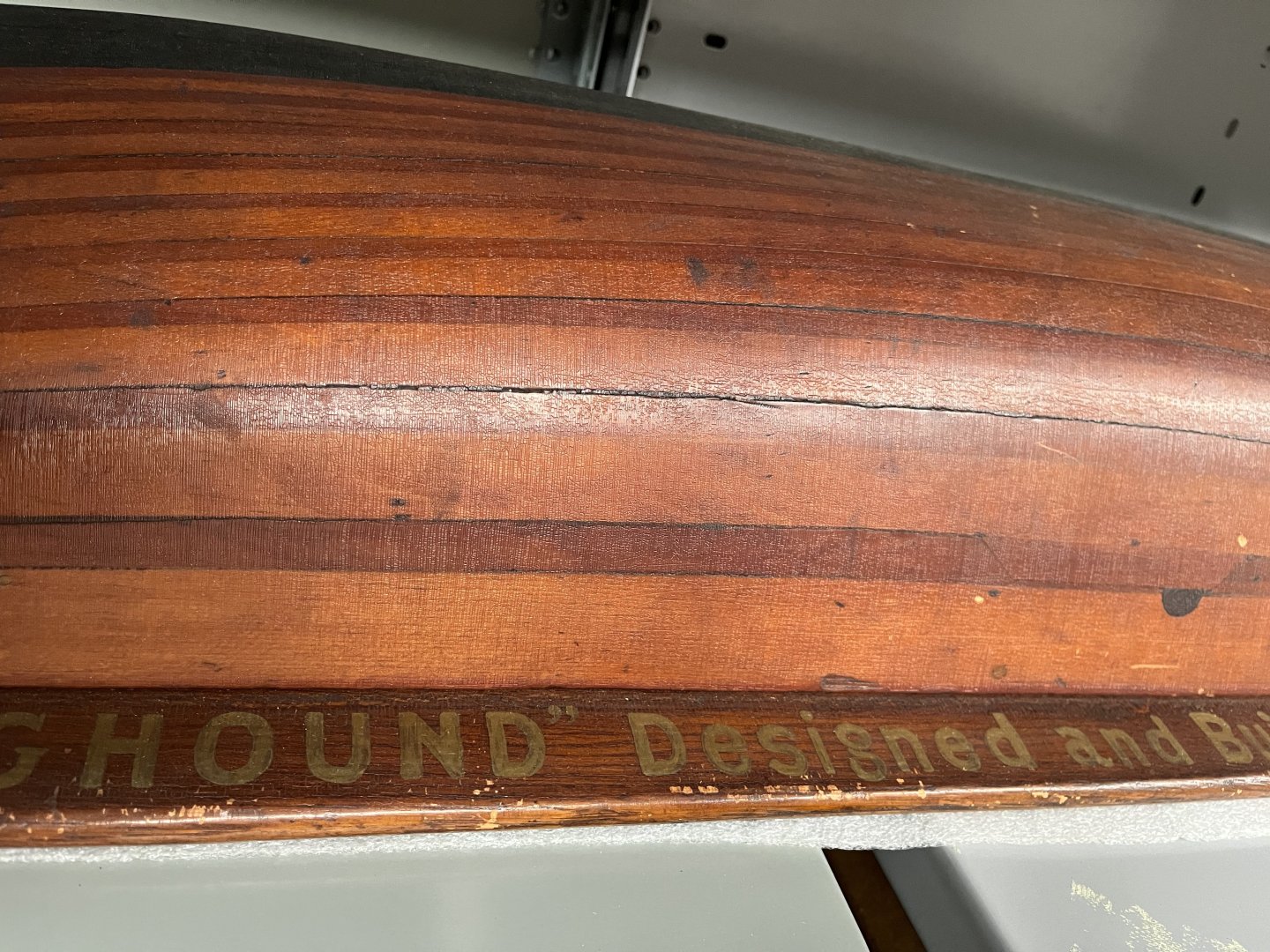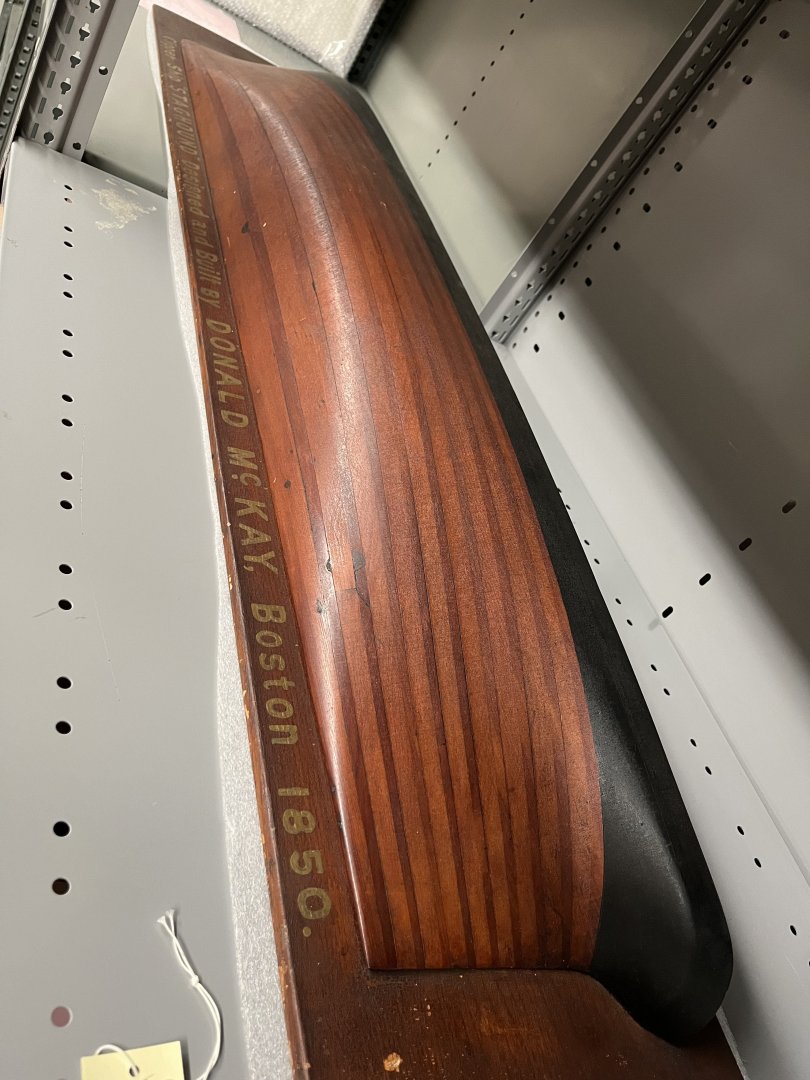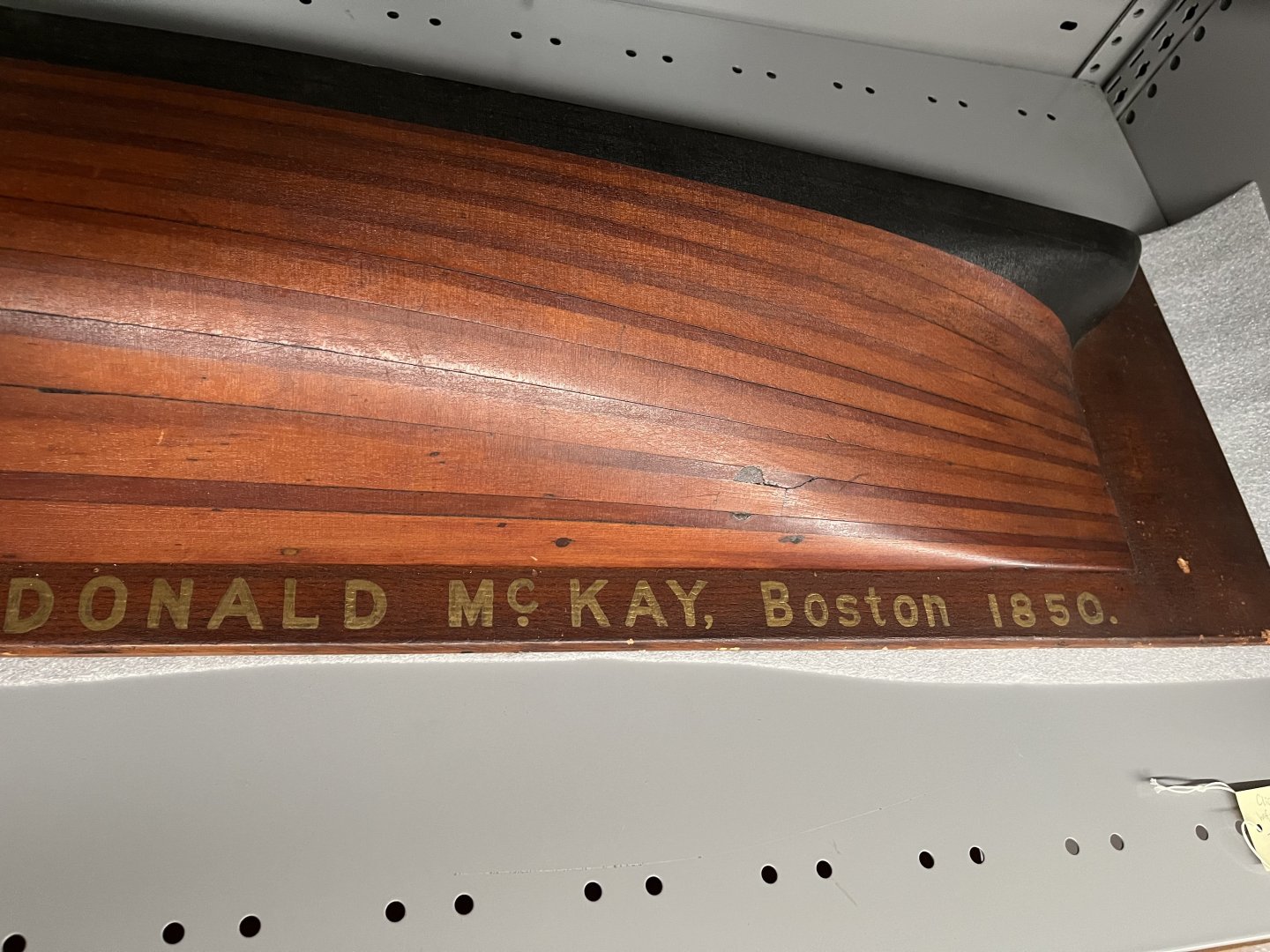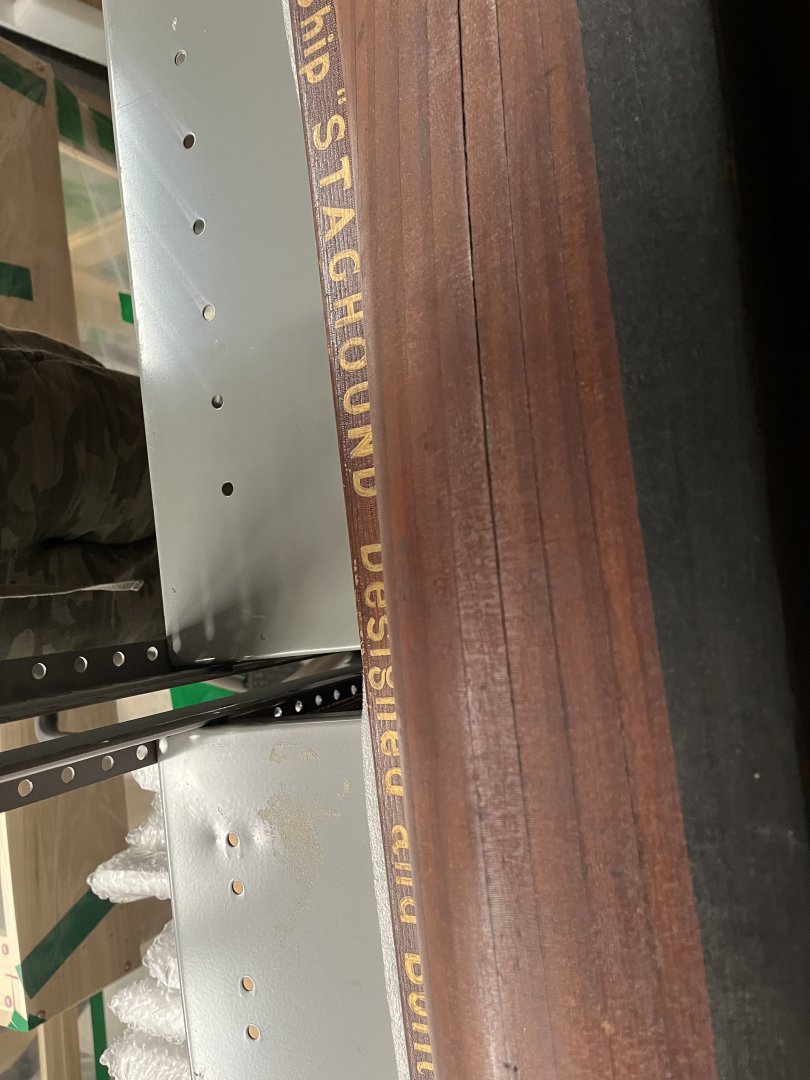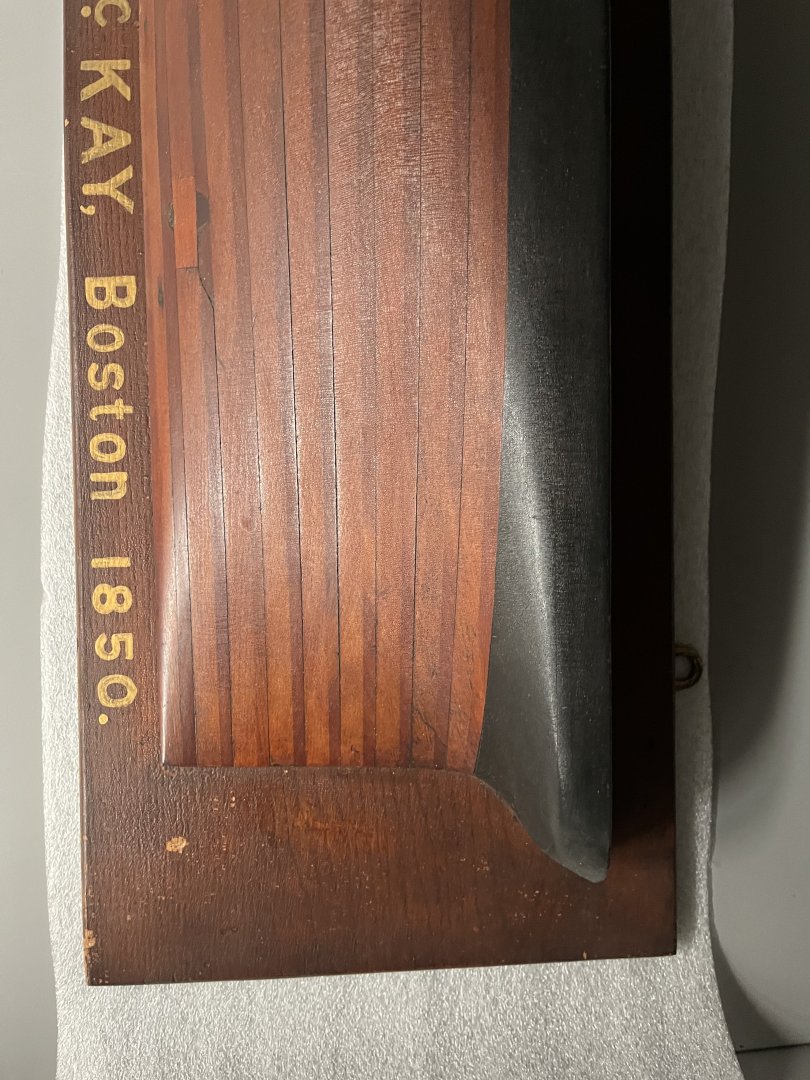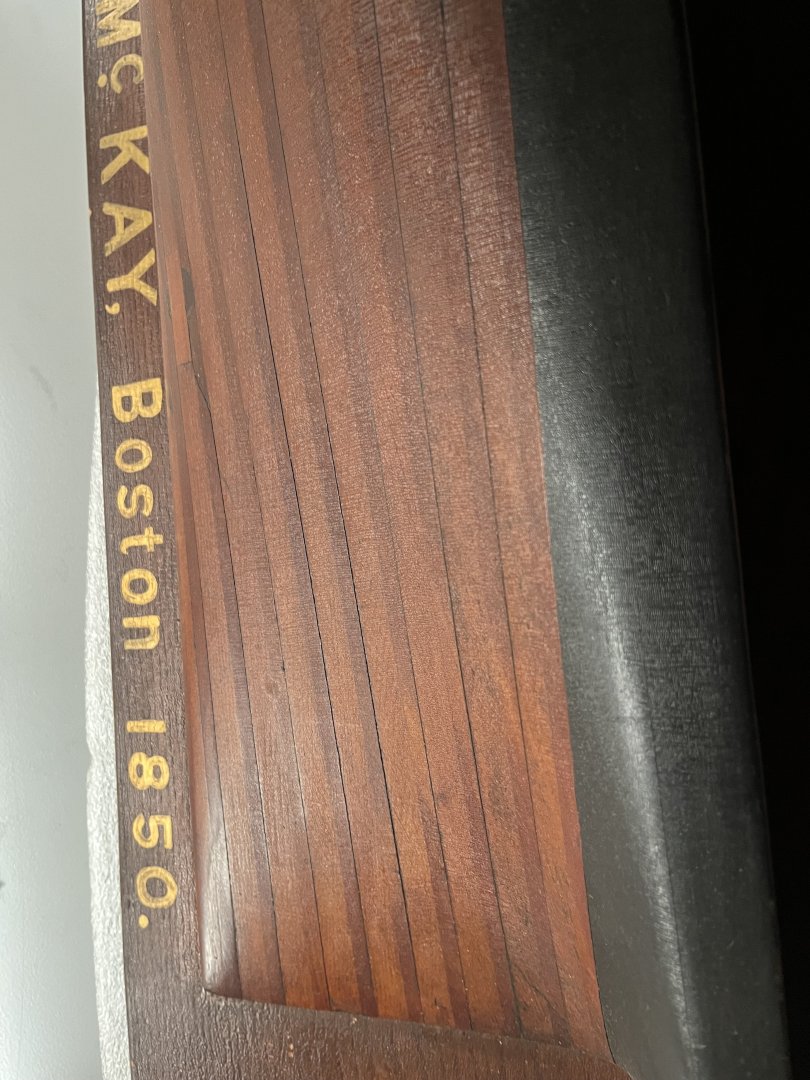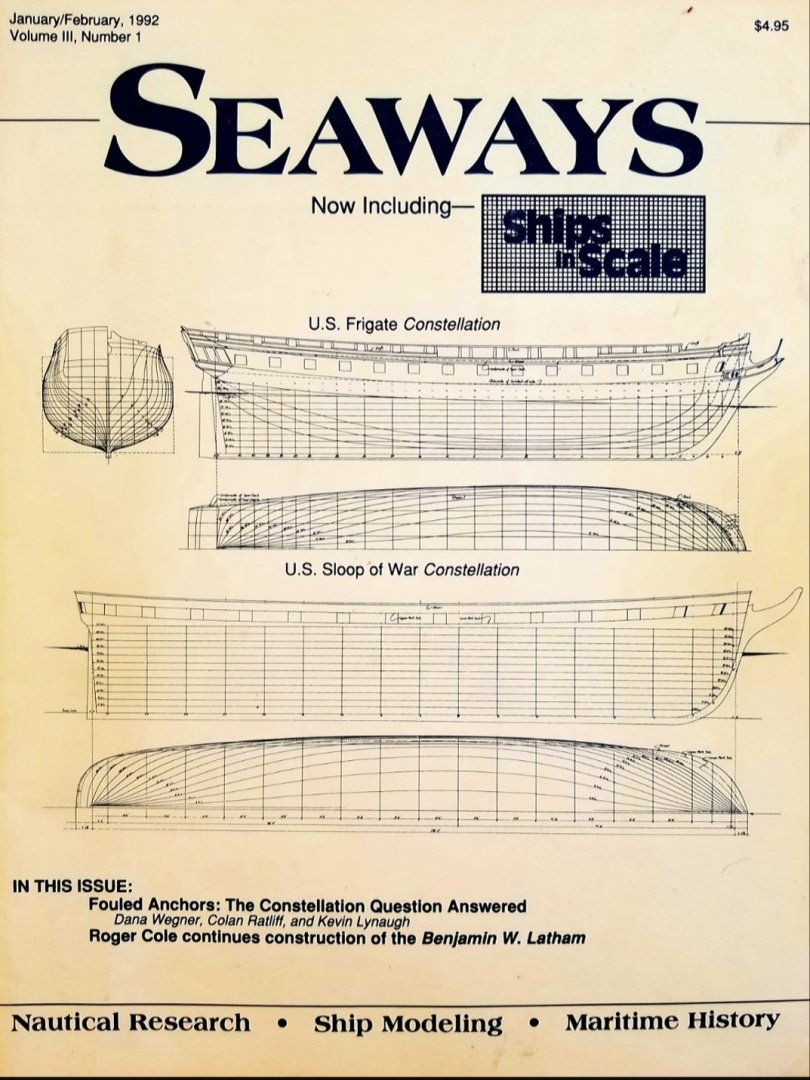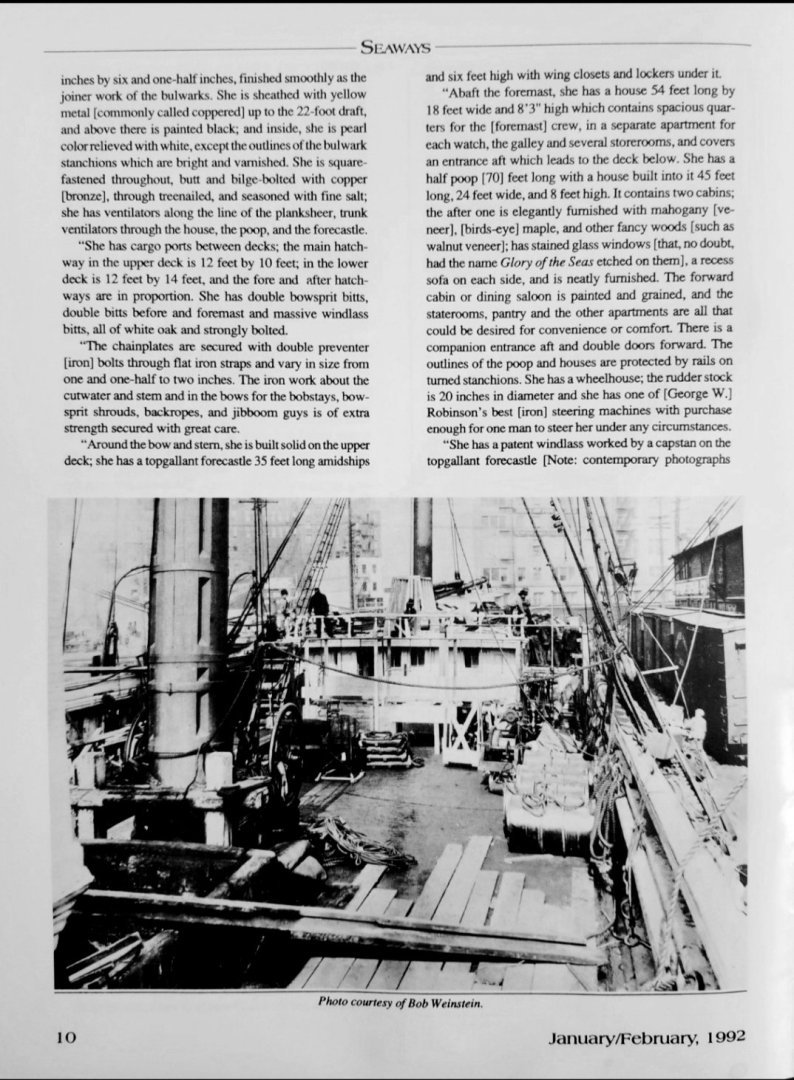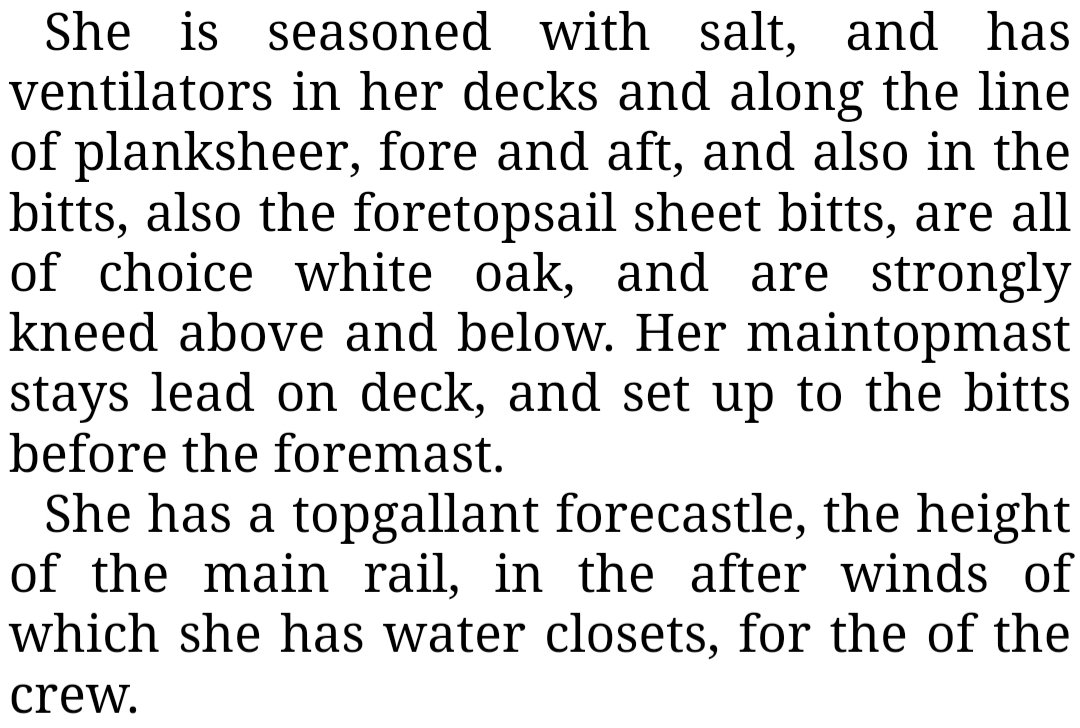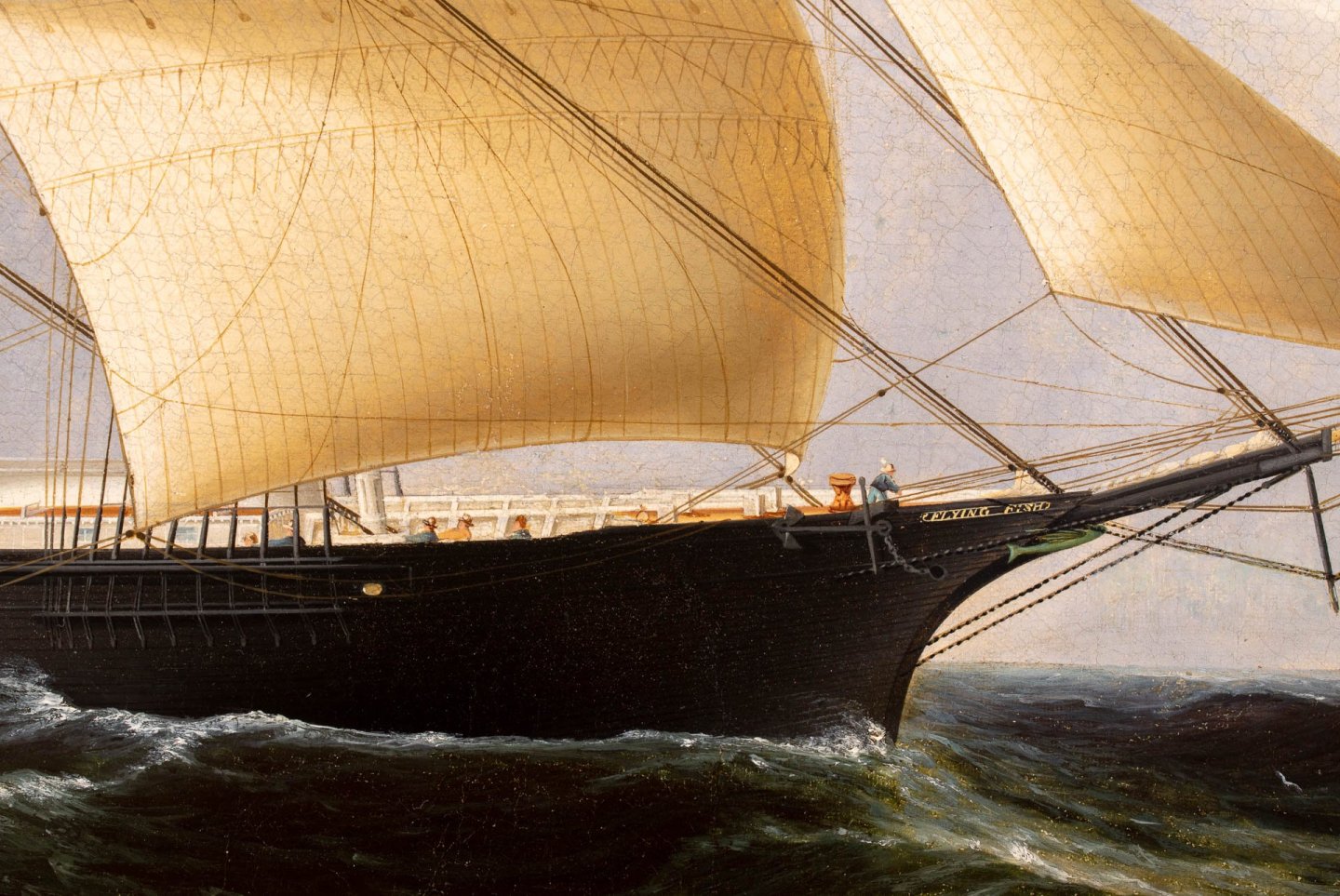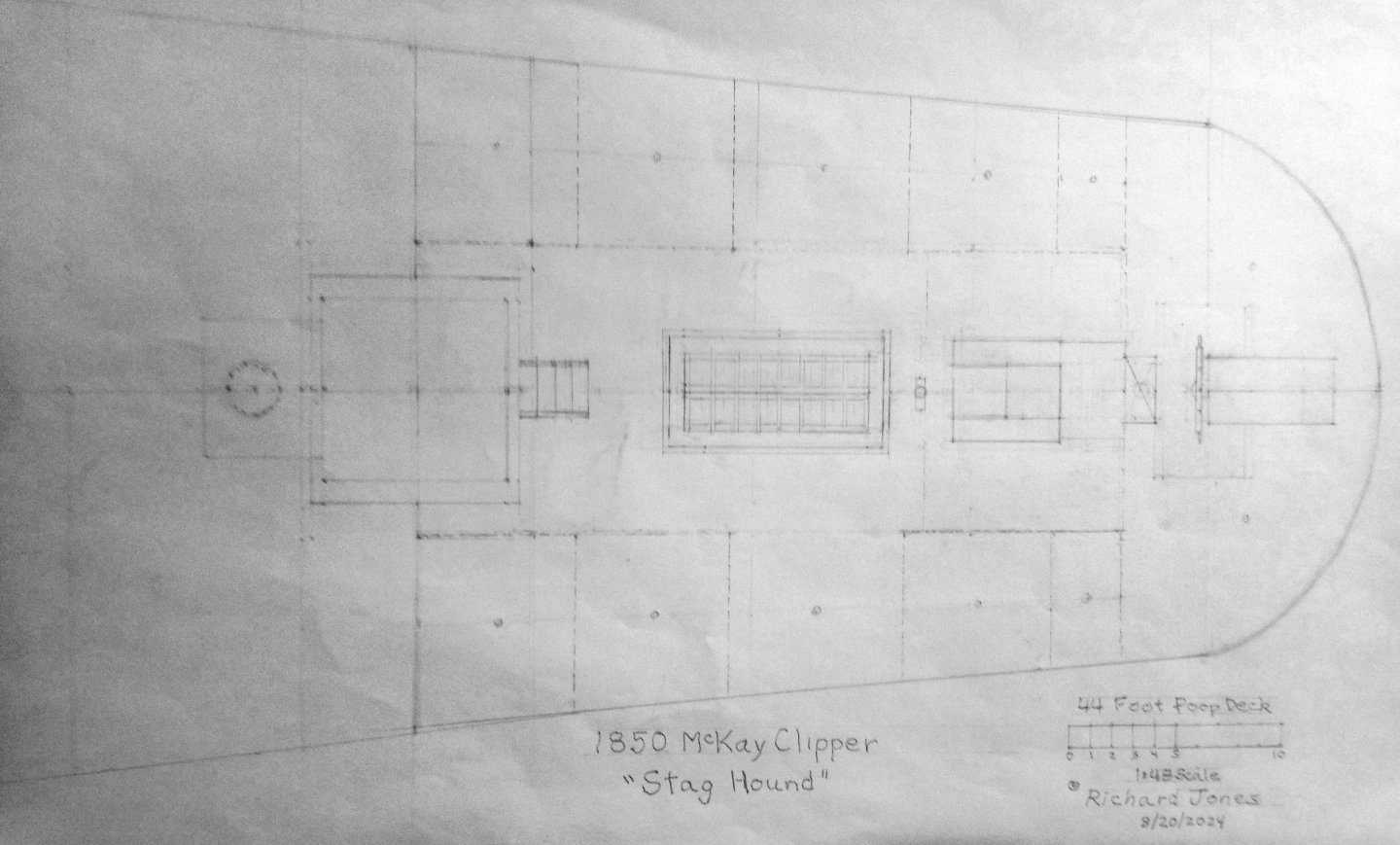-
Posts
2,168 -
Joined
-
Last visited
Content Type
Profiles
Forums
Gallery
Events
Everything posted by ClipperFan
-
@rwiederrich It was quicker to modify my existing 44' poop deck to reflect the 7' wider profile than restart the poop deck bulkhead. Dividing 37' in-half results in 18 & 1/2' per side. Half of an 8' portico leaves 2 & 1/2' on each side (of the 13' wide x 32' deep great room beneath) for the first molded division. How the entire area breaks down is this: 2.75' molded area with twin pillars on each side, then 3 equal 3' windows with pillars bordering each side (9') and another 2.75' molded area. 4' + 2.75' + 9' + 2.75' = 18.5' per side x 2 sides = 37'. As I sketch this out, I will finalize specific break downs for the molded areas as well as windows. Meanwhile, attached is my revised 44' poop deck incorporating the latest changes we discussed. Starboard on top in the fore is the captains very generous 12' wide x 18' deep stateroom, then the 8' recess and an 8' estimated wide × 6 deep steward's state room, after which is a 6' estimated wide x 4 deep watercloset. On port side. For first mate, there's an 12' wide x 10' deep staterooom, next door is an 10 estimated wide x 8' deep stateroom, followed by an 8' recess and then an 8' estimated wide x 6' deep third mate's stateroom, followed by another 6' estimated wide x 4' deep watercloset. The last double berth apartment occupies the stern. Each room including now both waterclosets, have a deck prism centered above. Sole exception is the captain's which has two, placed exactly opposite those of the first and second mate's staterooms. Side light portholes correspond with prisms on all staterooms with exception of waterclosets which only have deck prisms. One last observation. Two foot wide ladders could be repositioned alongside both outer bulkheads over the molded panel area. That would then provide for all three widows to have clear views. It makes more sense to me, unless there's a pragmatic reason to have a small section of railing before ladder openings that I don't know about. Let me know then.
-
Rick310, When reading McLean's description of the forecastle, he mentions that companions in wings of the forecastle lead to the accomodations for one watch of the crew below. At minimum, to be accurate, waterclosets would likely have to be abutted to the forecastle wall with companions on their aft sides. That would at least follow the specific description of the Boston Daily Atlas article. It seems that peculiar arrangement is awkward as hell, so the privies were placed behind a single companion. An arrangement which also doesn't follow the McLean description. To me there are several problems with the current plans. First, a 4 & 1/2' high deck makes underneath 3 & 1/2" lower. Now it's at 4' 2 & 1/2" high. We know this to be a fact since Michael Mjelde shared a document which proved that underneath the forecastle deck on Glory of the Seas was precisely 5 feet 9 inches. How can anyone do routine maintenance on a windlass stuffed into such a crawl space? The only pragmatic solution is to mount the windlass 3' below. As for having forward privies down below for ordinary sailors, guess where they're located on Stag Hound for the captain and all officers? 8 feet below the poop deck... To me, it's actually more logical to locate the same privies 8 feet below for the forecastle as well. Finally, once it's established that you can't provide sufficient space for a watch of the crew with a 4 foot 9 inch ceiling and you provide accomodations for them 3 feet below, the aft opening to the forecastle must be walled off. And since the area was well lit, lofty and well ventilated, that means windows were also provided. That's how Rob and I are proceeding for the extreme clipper Stag Hound.
-
Rob, With Captain's starboard stateroom being 12' wide × 18' long, it makes the beam of Stag Hound at poop deck fore 37'. This calculation is based on a central 13' wide x 32' long great room, most likely a 13' x 20' salon and 13' × 12' pantry. The most sensible arrangement is another 12' wide × 18' set of port staterooms, probably 3 divided equally 6' × 12' for the First, Second and Third Mates. This leaves equal space for 8' recesses on each side. That leaves 6' on each side for 2 more staterooms, one for the Steward another for an unidentified officer. It pushes waterclosets beyond the 32' wall but there's still space available. I can fit three 2 & 1/2' wide windows in a row with two 2' wide cabinet molded solid ends. In between would be faux pillars and modest arches similar to the portico. This provides plenty of light for twin staterooms. One outermost window would be behind a ladder on each side. When portico facade is added, it creates a unified impression. Let me know what you think.
-
Rob, Until you reminded me, I forgot about the prestige associated with a Captain's advancement to the poop deck cabin. Since the center forward of the poop deck is occupieed by the 8' portico with side opening doors, I would think that area closest to there would be cabinet style panels. Since there's definitely windows and a ladder on each side to consider, I see an alternating arrangement of windows between panels. Is the captain's stateroom the one that's 12' x 18'? If so, then my dotted lines on the poop deck also have to be redone to reflect that on the starboard side. Would each of the 3 mates and steward have their own staterooms or would some be shared? The pantry must be where the smokestack's located too. As the saying goes "back to the drawing board."
-
Rob, That's another side affect of McLean's haphazard way of describing ship's components. He's actually moved back to describing the forward cabin abaft the foremast. The Captain's 12' × 18' stateroom actually overlooks the main deck from the starboard aft section of the forward cabin. I've read nothing that says there's windows in the forward poop deck bulkhead. That doesn't mean there weren't any just that none are identified.
-
Rob, No problem, sliding tops can be added and the entire face can be flat. Companions in the wings suggests to me that they would be outermost, most likely to provide greater space around the windlass below. I see twin ladders just inside the companions. Windows would altrrnate between cabinet style molded panels with each set apart by faux pillars like those seen on the Glory of the Seas coach house front fascia
-
Rob, From what I read and saw, it appears your forecastle ideas are based mostly on Aberdeen Tea Clipper Thermopylae. She's a lovely vessel but from what I see, her focstle bulkhead height is lower, which is why the single entrance companion makes more sense. Here's my thinking about using twin companions and twin ladders. As we've already seen from size comparisons of Glory of the Seas to Cutty Sark, the former dwarfs the latter by a substantial order of magnitude. As we both know, Stag Hound at her launch was the largest merchant ship in the world. From what I can tell, her forecastle bulkhead is about 30 feet wide. Having single companions and focstle ladders strikes me as causing a bottleneck for crew trying to utilize either source. Doesn't it make sense to make access easier by providing twin resources? It also follows the historic layout of Flying Fish the only ship where the placement of port and starboard companions is actually stated. Besides, if you had a single center mounted entrance to quarters below, would't that run into an issue with the patented windlass which also is centrally mounted? Maybe the idea of waterclosets being before the companions bothers you? In that case, I'll point out that McLean doesn't specify exactly how far ahead of the companions the "heads" are located from the ingress ladders, just that they're before them. What's your feeling about the idea of focstle bulkhead windows? Is it too much or does it make sense? If there are windows, my idea is to pattern the fascia after the forward one on the coach house in Glory of the Seas since the span is actually a little larger. It also seems to me that some sort of overhang makes sense to me, maybe just a foot, since bulkhead height is just 5'. However, if the focstle bulkhead is solid, then there's another problem to solve: how does light get 8' downstairs instead? I find the idea of a focstle skylight to be a bit fantastic. Your thoughts?
-
Rob, I've attached McLean's sort of running description of the one time he refers to crew accomodations being set up in a lower area underneath the focstle deck. This is for McKay's 4th extreme clipper Flying Fish which has the shortest main rail height of any McKay clipper I've ever read at 4 & 1/2' (54"). With a 16" monkey rail, it brings her total bulwarks height to 5'10" (70"). It's this very low main rail height which proves it's impossible to have crew accommodations on the main deck under the focstle. It also tells me that unless the entire windlass is outside of the focstle deck, it too must have been mounted 3' below on the crew quarters deck. I have no other goal then to be as faithful to what little documentation we have to accurately reproduce a McKay clipper, whether it's Stag Hound or any other one. As far as positions are concerned, I've learned from reading a lot of McLean descriptions is that he tends to describe arrangements backwards. By that I mean from aft forward. When reading his descriptions, I've learned it helps to have an agile mind in order to follow how he reverses directions pretty much continuously in the same article. This can lead to confusion of positions unless you visualize items as he describes them. I'll demonstrate using Flying Fish at first which describes both companions being "in the wings" of the forecastle with water closets before them (not after as current Flying Fish plans have them). Picturing this, it only makes sense if these water closets are 3' down below ahead of the companion ladders to downstairs. With the forecastle deck being mounted at the 4 & 1/2' main rail height, that means the windlass would have to be mounted below too. At the risk of overkill, using McLean's descriptions of the deck furniture on Stag Hound I'll demonstrate how he constantly reverses directions in his descriptions. As he describes the long house behind the foremast, he's basically describing fore to aft "abaft the foremast." He's consistent in describing the poop deck but begins reversing direction as he ends up describing the small square portico in the center of the fore poop deck. Watch now how he completely reverses from aft to fore as he describes the apartments 3' below the poop deck. He starts at the stern, actually behind the 32' x 13' great room or salon, that's where the largest apartment accommodation for two berths fit for a family resides. First impressions would lead you to conclude all these apartments are inside the 32' × 13' great room. Because McLean never clarifies that they actually surround that room's perimiter. But when he describes that each stateroom has its own decklight and sidelight, that's impossible unless one side is on an outer bulkhead wall. In this case, McLean describes each apartment's position from aft to forward, beginning with that large double berth apartment fit for a family. Now watch this: before this there's a watercloset on each side, then a state room, before that a recess of eight feet on each side, then two state rooms. To reinforce this conclusion, I've reposted my 44' Stag Hound poop deck illustration including dashed lines to show the correct positions of all of these apartment elements. I hope this answers your concerns satisfactorily.
-
Rob, Specific locations of her focstle companions aren't mentioned for Stag Hound. But, by referencing that water closets were in the after wings of the focstle, that's exactly the same description Mclean used for Flying Fish. And in that write up, he did state that companions were in the wings of the focstle with the water closets before them. Since we're working with such sparse details, I'm reluctant to stray from the little details we have to work with. As for using just a couple windows in a 30 foot span, that just seems to leave a lot of walled in area which would limit lighting sources down below. I will try and sketch this area at 1:96th scale to see how it looks.
-
@Rick310 An update on your inquiry about seeing Cornelius McKay's stunning extreme clipper Stag Hound hull model in person. Lori told me their warehouse isn't open to the general public. No surprise. She did say there might be plans to display the artifact sometime next year. I reminded her that December 7th, 2025 will be the 175th Anniversary of the launch of Stag Hound and that wouldn't it be nice if all Boston and Massachusetts museums could do a coordinated retrospective on the amazing legacy of Donald McKay? She agreed to pass on my suggestion to the Exhibit Committer. In a separate communication, author Michael Mjelde answered me with two simple words: "I concur." I was told by Lori to stay in touch for further developments.
-
Rob I thought I already shared this. It's my preliminary focstle bulkhead sketch. At both ends are the companions. They consist of dual, single opening doors. Push one and the other opens too. Both fold flat inward. Companions are 30" wide x 4' high. Focstle bulkhead is 30' long x 5' high. As I envision it, the commpanions project out 2' and are flush with focstle deck above. Dual focstle ladders mount just inside each companion. The focstle deck creates an overhang to protect windows. Each window alternates with ornate cabinet style molded areas. In between these, there are faux pillars to complete the impression carried forth in the small portico, tying the ship together thematically. I see widows protected with similar wooden venetian-style slats like those seen on skylights to protect against bad weather conditions. As I said, this is preliminary, a work in progress. It may be a bit overkill but here's my reasoning. Donald McKay intentionally built the largest merchant vessel in the world. He was definitely making a statement that Boston had arrived as a strong competitor to the New York shipyards. Why not make her ornate as well???
-
Rob, That's a beautiful tea clipper Thermopylae model. If you feel this is more authentic, that can be done. It's reminiscent of the Glory of the Seas stern coach house aft companion. Meanwhile, how do you feel about the rest of my conceptual focsle bulkhead? Is it too ornate? Do you agree or disagree with this or any type of windows? If there's no windows, how else would light be provided? Prisms would make sense but I don't know how much light they would provide. Is the idea of a focsle skylight realistic or too extreme?
-
@Rick310 About the only contemporary artist I've seen who has accurately captured McKay's fascinating clippers has been the British artist Samuel Walters. His Glory of the Seas clearly depicts her gilded, carved navel hood, cutwater and figurehead accurately. I still get great inspiration from Buttersworth's gorgeous works but don't rely on them for modeling accuracy. FYI: in our research of McKay's initial clipper Stag Hound and her solid focstle bulkhead, I came across yet another misinterpretation of Duncan MacLean's words. Flying Fish the vessel you're constructing has about the most complete description of her low mounted focstle deck. Her main rail was a mere 4 & 1/2 feet with a 16" monkey rail above it, for combined bulwark height of 5 feet 10 inches. Here's where I believe current plans have gotten it wrong. In his particular listing of ship's accomodations, McLean often refers to apartments from aft to foreword. His description of the water closets (heads) says that they're before her companions, not aft. Knowing how McLean describes deck furniture from aft to fore, this says that the water closets were not on the main deck but below in the accomodations for use of one watch. Down there too would be the windlass because leaving it on deck is effectively a crawl space when you take into account deck beams. That means the front focstle bulkhead wouldn't have been open but a complete wall possibly with windows to allow light into the interior 7 & 1/2 feet below. This is how Rob and I are looking at the focstle bulkhead for Stag Hound. I am not suggesting you do anything to your current build. I'm just sharing this latest development to raise awareness.
- 345 replies
-
- Flying Fish
- Model Shipways
-
(and 1 more)
Tagged with:
-
Rob, It's my belief that even artists couldn't quite figure out how to capture the unique McKay bow. I was commenting on the fact that this painting's bow silhouette definitely displays a more dramatic prow then just a bare stem. If, as it appears likely that Buttersworth painted this vessel while she was at anchor in San Francisco, he would of necessity had to have been quite a distance away to capture the entire vessel. I love the beautiful inspiring works of Buttersworth but recognize he often makes mistakes, especially around the bows of McKay's clippers. Take the Sovereign of the Seas for example. It's a gorgeous piece of work. But his merman has a tail that goes impossibly across the bow.
- 345 replies
-
- Flying Fish
- Model Shipways
-
(and 1 more)
Tagged with:
-
@Rick310 Thanks for the compliment. These incredibly beautiful photos come singularly through the kind generosity of Lori Fidler, Associate Director of Collections, Old State House, Old South Meeting House, 310 Washington Street, Boston, MA 02108. This spectacular 173-year-old antique is in storage at their warehouse. Personally, I doubt that it's available to the general public to view but I sent her a request to see if it's a possibility. Perhaps a supervised visit could be arranged. I will let you know her response to this inquiry. Originally, she quoted me $40/hr for maybe a couple hours for two curators to take the artifact out of storage and take pictures for me. However, when she discovered that it wasn't in complex wrapping, she took these photos and waived the fee. Since I'm still attempting to get port broadside photo, head-on fore and aft photos too. The idea is to make best use of this truly unique connection to Donald McKay's visionary inaugural, extreme clipper Stag Hound which Cornelius McKay brilliantly named "the Pioneer craft of the California Clipper Fleet. I'm still trying to chase down the drawing which originally accompanied this remarkably crafted, sole surviving authentic Builder's model. I will also share the 1850 Chinese export painting that Lori kindly shared too. For $25 it's possible to get a copy without the watermark. She was kind enough to send me both low and high-res images for that modest fee. I have her contact info, if you want to message me.
-
Rob, You're welcome. I'm still trying to get my ideal fore, aft and broadside pics. This set may be the limit of what's achievable but we'll see. I'm still in awe of how beautifully finished this replica is. I'm not a wood veneer specialist but my best guess is the main lifts appear to be cherry separated by elm with flat black hull finish, possibly on an oak plaque.
-
While these images aren't very helpful towards our goals of reproducing the most accurate clipper Stag Hound replica, I feel they're still worth seeing. Here, probably for the first time since 1928, is Cornelius McKay's beautifully crafted clipper half hull model. Since he wrote that it was actually modeled while the ship herself was under construction, we know it was built in 1850. For an antique, nearly 174 year old sole surviving Builder's hull model, she has held up very well.
-
Rob, To answer your legitimate concerns, I first went to the McLean description of Glory of the Seas. What shocked me was that, contrary to expectations, he actually wrote that the focstle deck height was 6 feet! My first thought was "how did I miss this?" I'm glad that we finally, through a convoluted evaluation process, arrived at the correct conclusion. Unfortunately, it required you and Vlad to both do challenging tear downs to achieve the proper scale height. It goes back to the old carpenter's adge: "Measure twice, cut once." I agree with your concept Rob. Just as our "North Star" in the Glory of the Seas project was to create the most faithfully authentic replica, I'm just as fully committed to doing the same for our Stag Hound project. Unless there's documented proof to contradict McLean, I still believe in the historic accuracy of his descriptions. So, while my personal direction was to think of the deck height of the focstle as being at the monkey rail, that's not what McLean says. So, the height is at the main rail. That being so, this leads me to reverse my position and accept that fact. This would necessitate a solid focsle bulkhead, with dual entry port and starboard companions. It makes sense to protect a newly patented, most likely heavier complicated gearing windlass mechanism.
-
@Rick310 beautiful work on your built lower masts. I particulary appreciate your specific, detailed rendition of each material you used and how you crafted them for your modeling needs. I love the look of your hull. Your's is the closest profile to the gorgeous work of JE Buttersworth, specially commissioned by her owners to celebrate her remarkable firat place win in the Great Atlantic-Pacific Deep Sea Derby of 1852-53. Combined with her lofty rig, your Flying Fish is shaping up to be the finest ever seen!
- 345 replies
-
- Flying Fish
- Model Shipways
-
(and 1 more)
Tagged with:
-
@Richvee great advice! I've never heard of that approach before. You learn something new every day.
- 431 replies
-
- Flying Fish
- Model Shipways
-
(and 2 more)
Tagged with:
-
Rob, A couple days late and not fully finished to my full standards (missing railings around portico and at least the fore end of the poop deck). But, this layout fits the bill enough for you to proceed. One small addition: another prism light above the rear heads. Since it's unlikely a porthole would be fit in, I figure something had to let in light. As for dimensions, it's a tight fit but 3' wide fits in neatly with all other specs which match up with a 32' great room sometimes also referred to as a salon. I suppose the heads could be made wider and possibly act as inset walls for the large stern double occupancy apartment fit for a family. Regardless, unless you're modeling apartments below, none of this pure speculation matters. Other revisions include a foot deep seating area on all four sides of the skylight. Since I used a 3" overhang, the indent is 9". As the base is 5' and length is 10' that brings inside house dimensions to 3 & 1/2' wide by 8 & 1/2' long. There ends up being exactly 8 equally divided glass sections, which like would have had wooden venetian blind type slats for weather protection, reinforced with brass rods. Both sides would be capable of being propped up and opened in warm weather as well. Further back, I scaled down the companion length to 5' with a 2 & 1/2' sliding top and 1' ends, making it 4 & 1/2' wide. That gives 3' space between the aft of the skylight and companion fore. Exhaust stove fit midway leaves 6 & 1/2' to companion entrance. The space in front of the companion is now 3'. Everything else just looks right now. Note: lines on the illustration are arrow straight. Bends are due to paper not being on a totally flat surface.
-
Rob, McLean was wrong. McKay's ships all had their focsle deck heights at the monkey rail height. Of that I'm now positive. In every description of a McKay focsle, there's plenty of room for off-duty crew. That's impossible unless the bulkhead height is at the monkey rails. Looking at Crothers' illustration, the "wcs" look overly small, probably not to scale. As far as pushing them back, why not set the focsle bulkhead wall just behind the foward hatch, instead of pushing it back. I need to sketch it out to envision spacing. The patented windlass also appears to be taller but more compact. Another reason the interior focsle deck height is about 6'. Somehow, I'm sure it all works out.
About us
Modelshipworld - Advancing Ship Modeling through Research
SSL Secured
Your security is important for us so this Website is SSL-Secured
NRG Mailing Address
Nautical Research Guild
237 South Lincoln Street
Westmont IL, 60559-1917
Model Ship World ® and the MSW logo are Registered Trademarks, and belong to the Nautical Research Guild (United States Patent and Trademark Office: No. 6,929,264 & No. 6,929,274, registered Dec. 20, 2022)
Helpful Links
About the NRG
If you enjoy building ship models that are historically accurate as well as beautiful, then The Nautical Research Guild (NRG) is just right for you.
The Guild is a non-profit educational organization whose mission is to “Advance Ship Modeling Through Research”. We provide support to our members in their efforts to raise the quality of their model ships.
The Nautical Research Guild has published our world-renowned quarterly magazine, The Nautical Research Journal, since 1955. The pages of the Journal are full of articles by accomplished ship modelers who show you how they create those exquisite details on their models, and by maritime historians who show you the correct details to build. The Journal is available in both print and digital editions. Go to the NRG web site (www.thenrg.org) to download a complimentary digital copy of the Journal. The NRG also publishes plan sets, books and compilations of back issues of the Journal and the former Ships in Scale and Model Ship Builder magazines.

